Botswana Wildlife Spectacular: Photography Tour Report 2018
19 November - 1 December 2018










































































Hippopotamus heads (image by Mark Beaman)
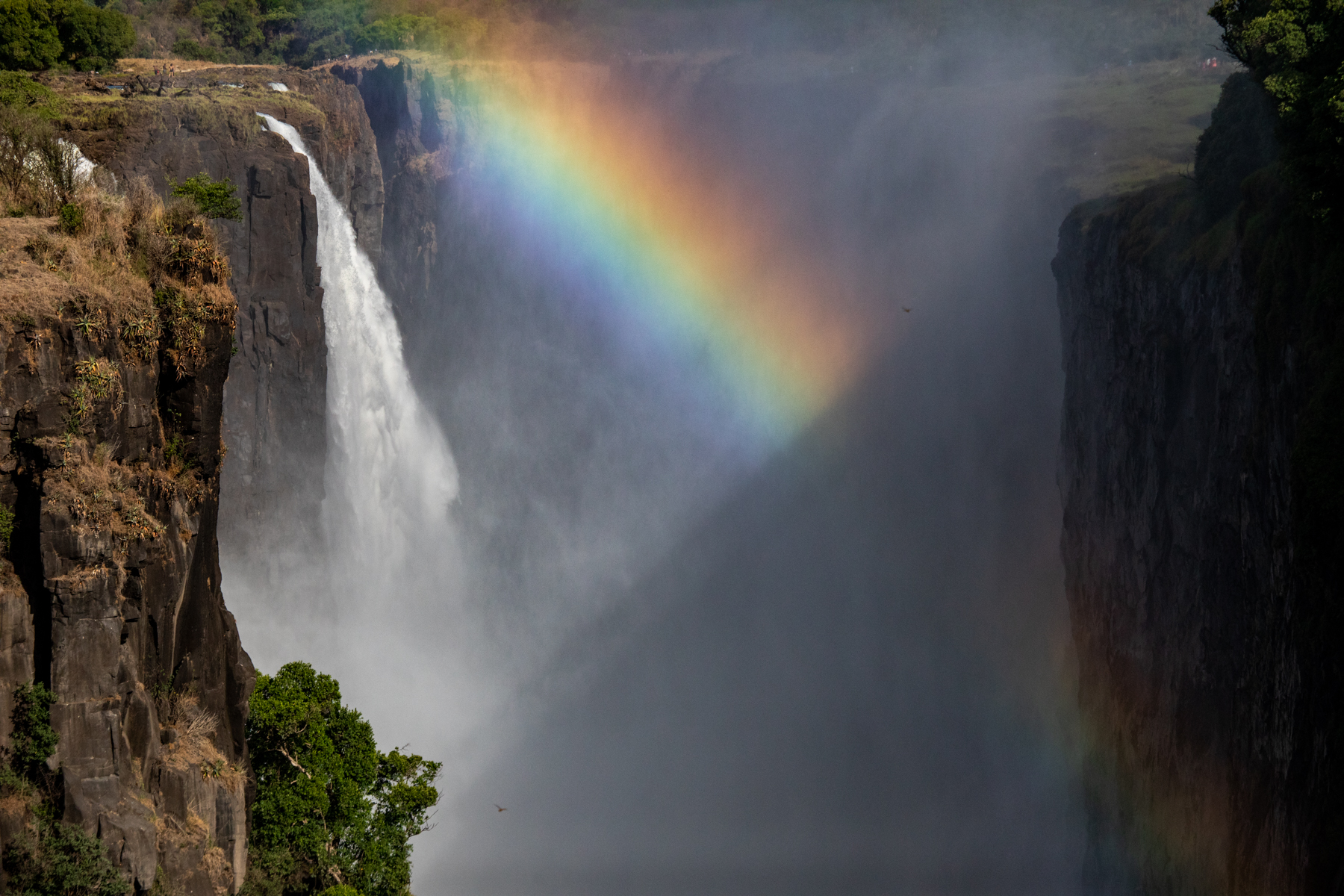
Fantastic rainbows in the clouds of spray are a lovely feature of the Victoria Falls (image by Mark Beaman)
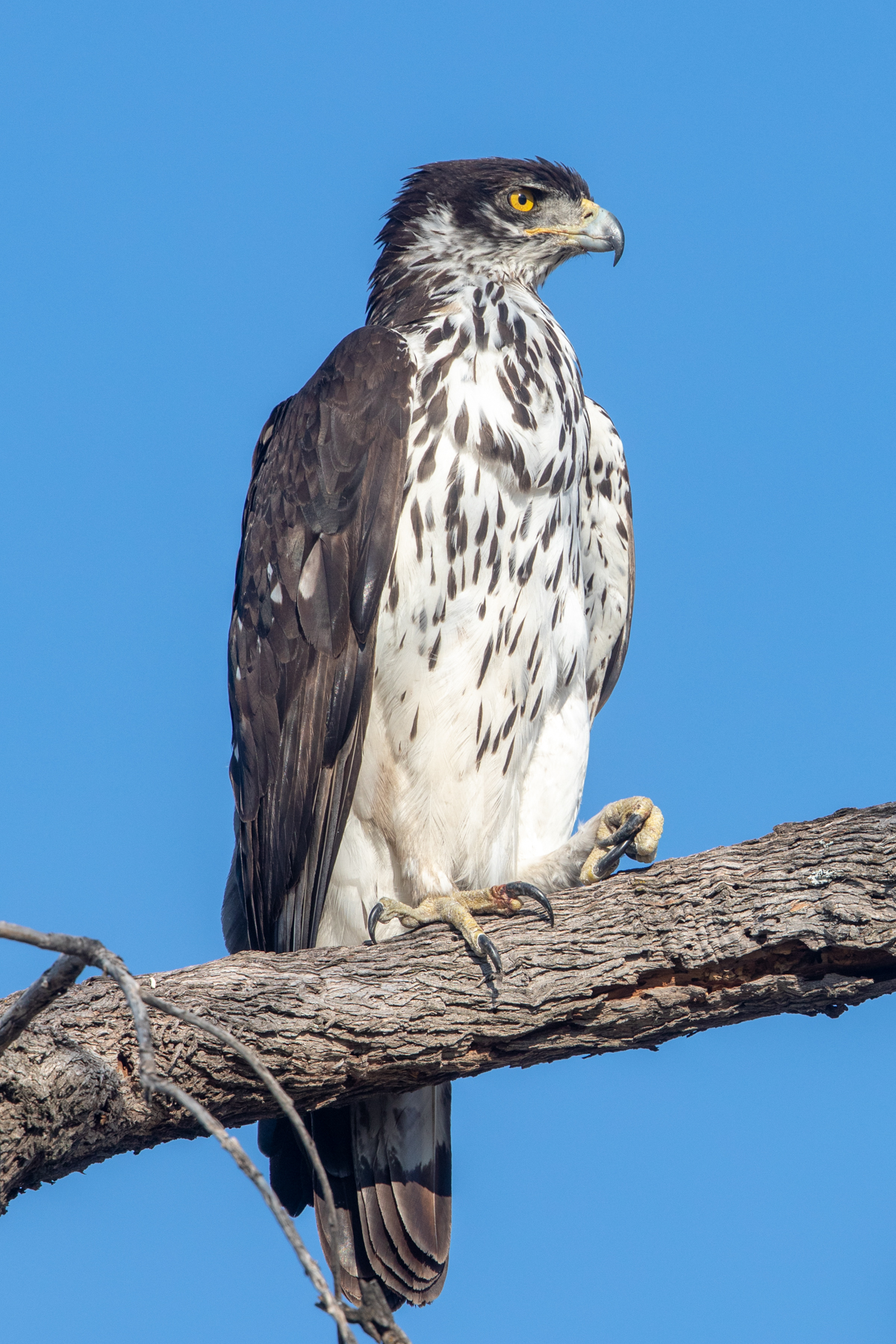
African Hawk-Eagle portrait (image by Mark Beaman)
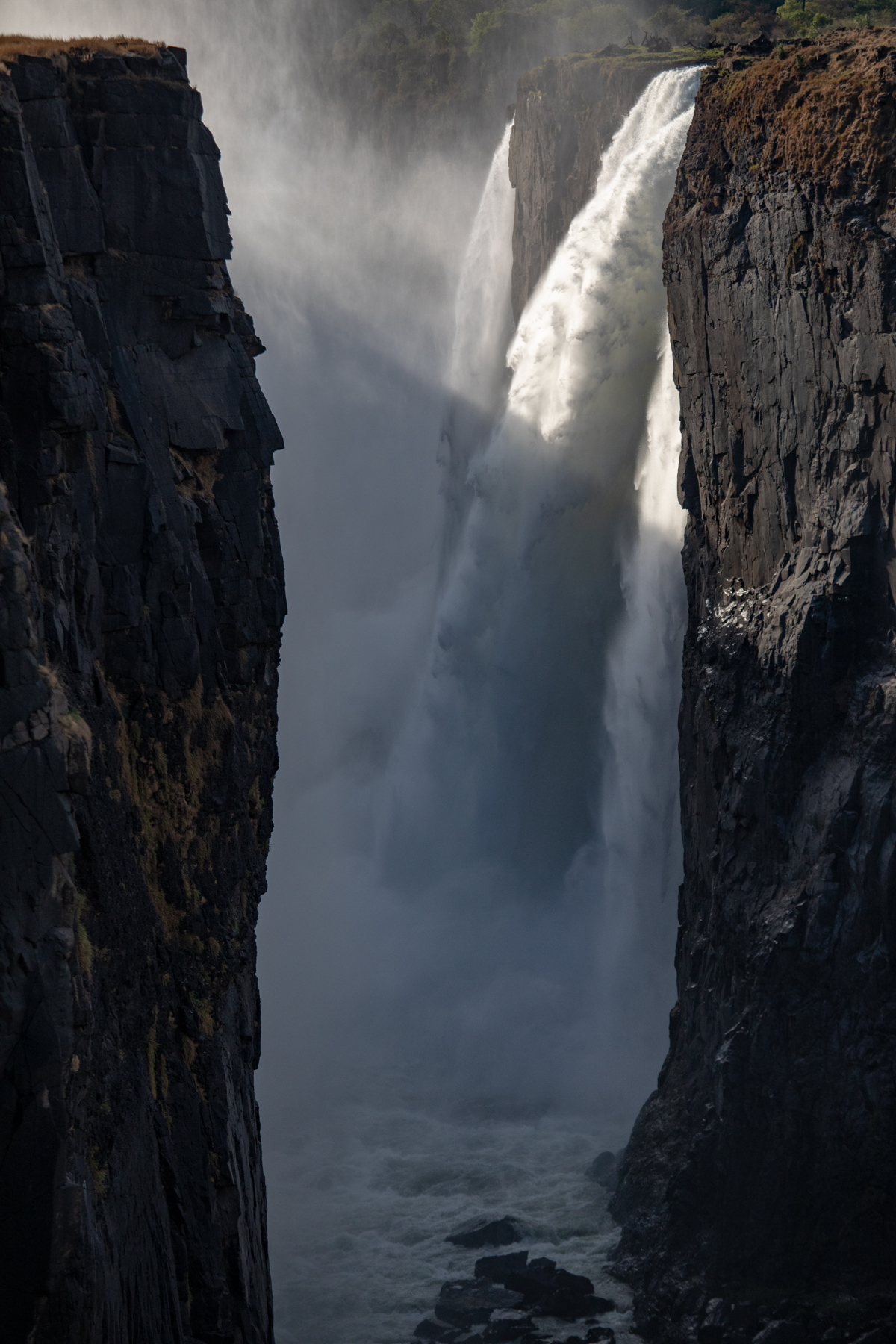
One of the spray-filled chasms at the Victoria Falls, Zimbabwe/Zambia border (image by Mark Beaman)

"I love you Mummy!" Lion cub and mother (image by Mark Beaman)

A pair of elegant but endangered Wattled Cranes in Moremi Game Reserve at the edge of Botswana's Okavango Delta (image by Mark Beaman)
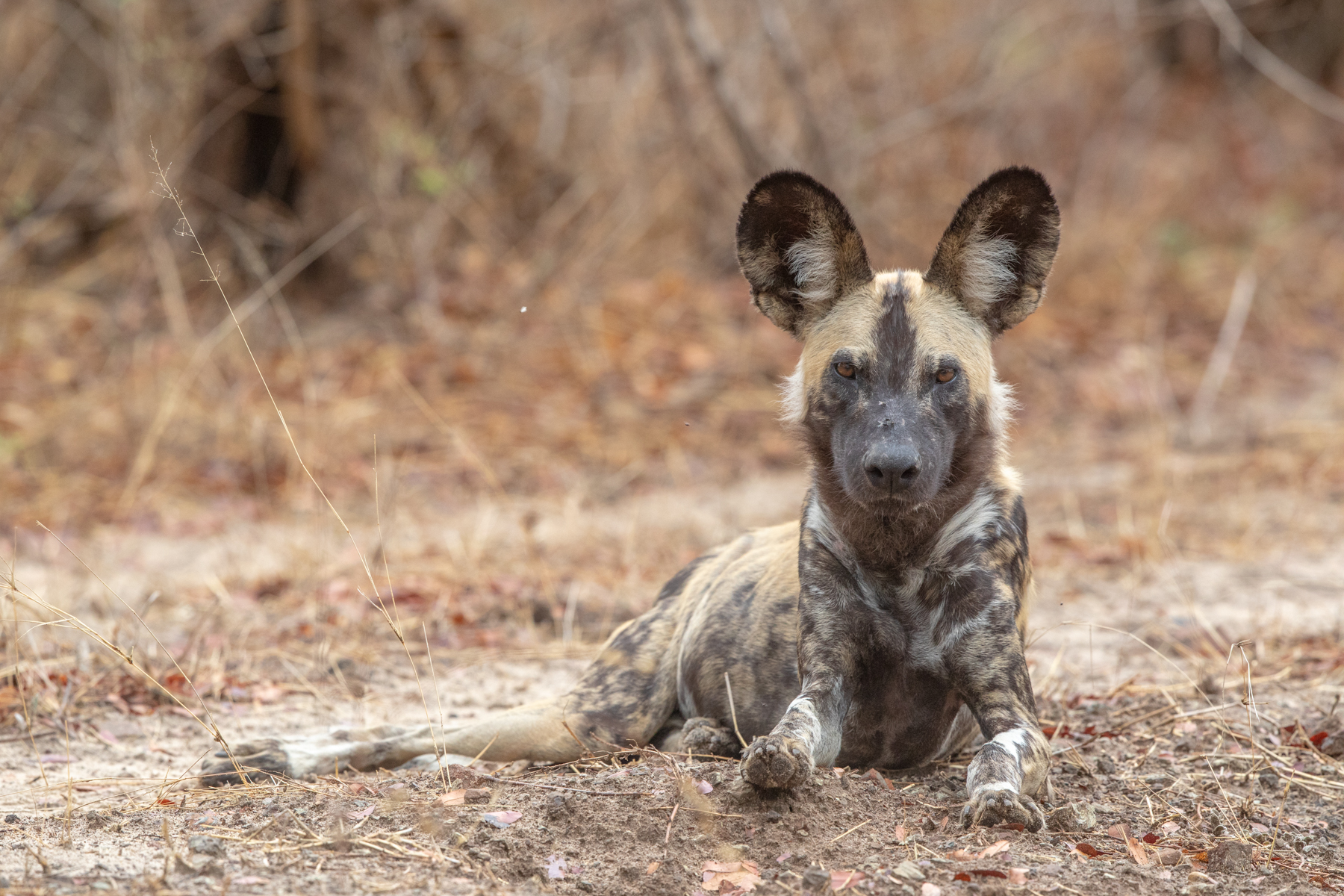
A Painted Wolf (or African Wild Dog) in Botswana, surely the best place to see this sought-after predator (image by Mark Beaman)
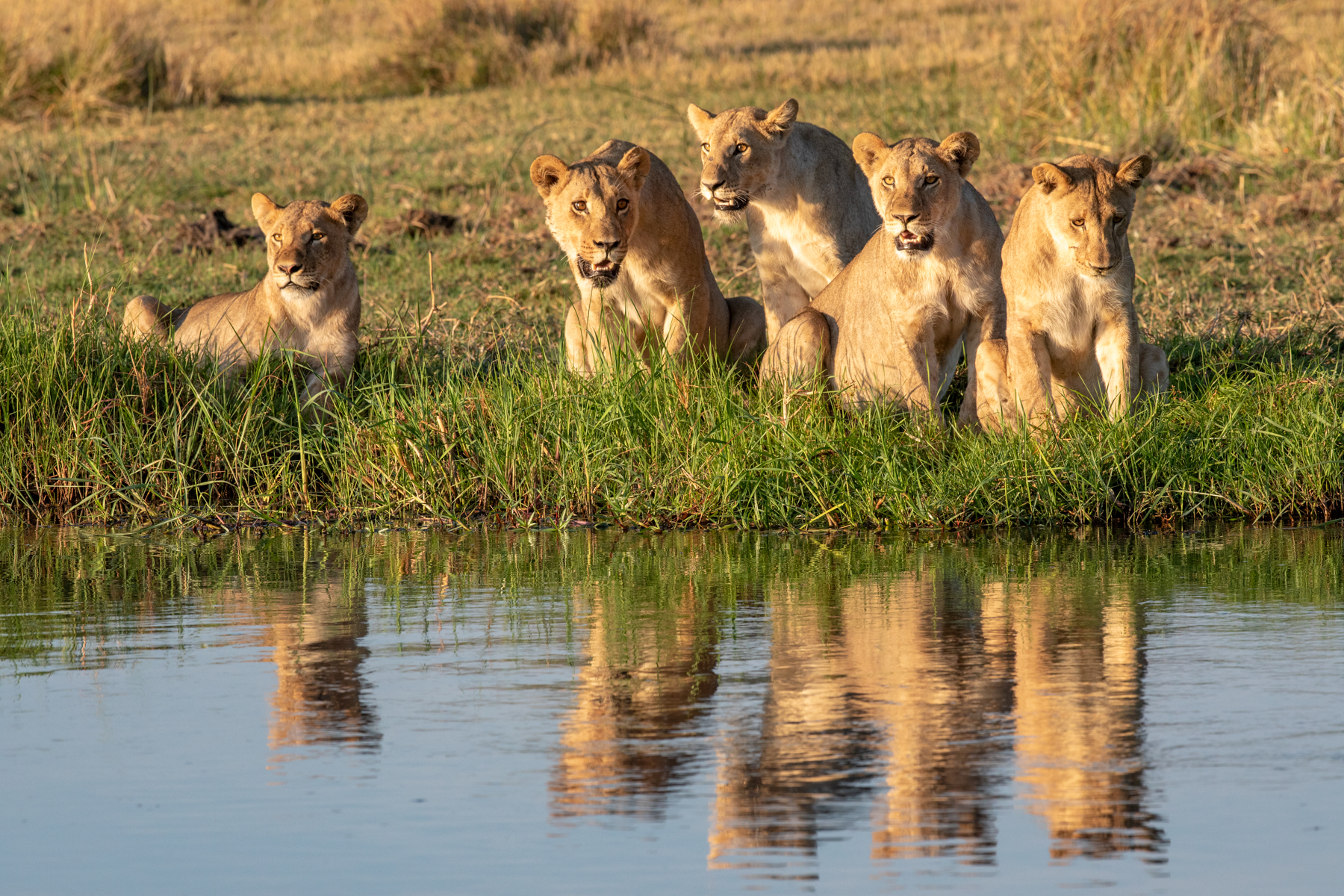
Lions at the river bank (image by Mark Beaman)
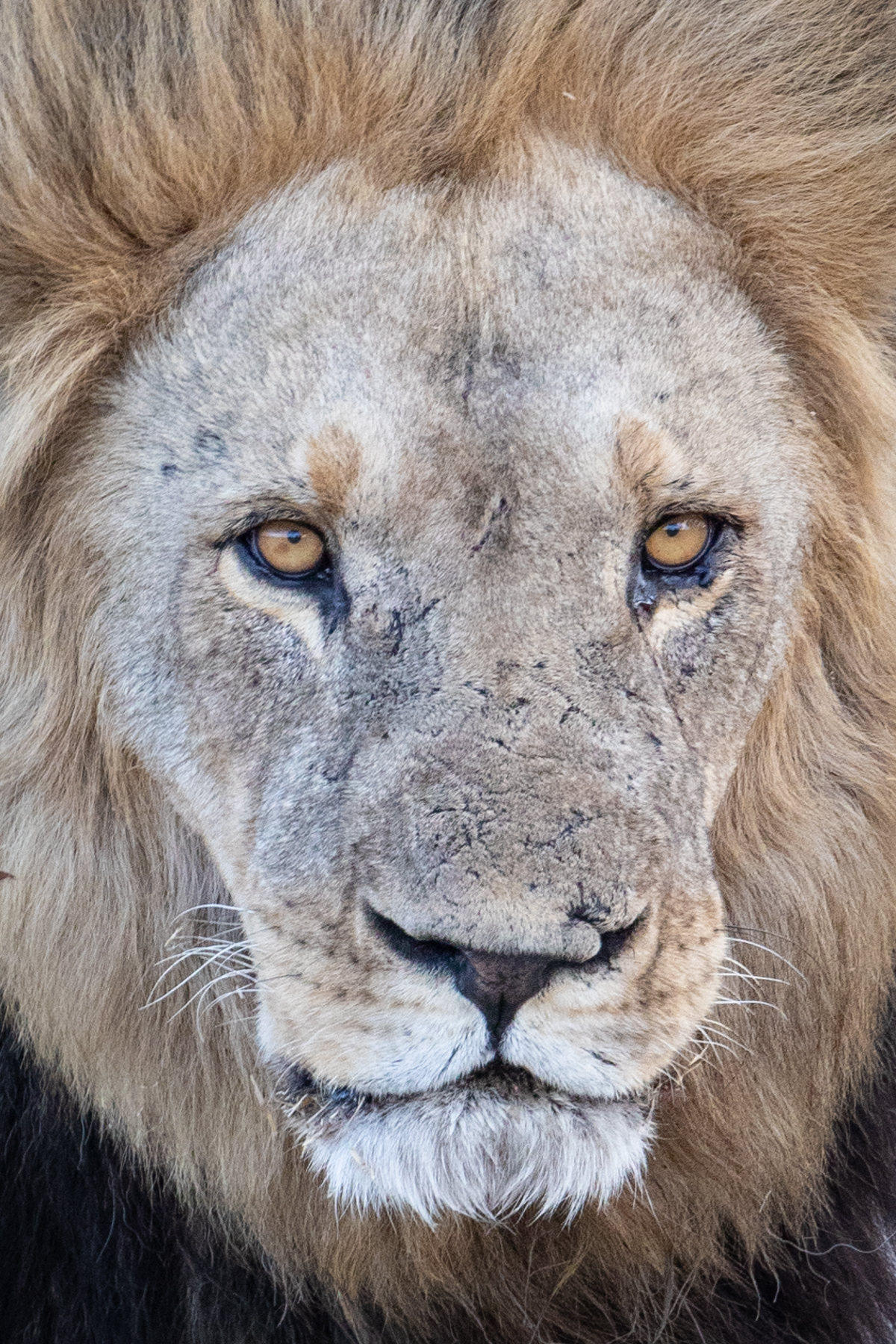
Male Lion portrait (image by Inger Vandyke)

Tiny biting flies torment a Painted Wolf (or African Wild Dog) until it leaps up to catch some (image by Mark Beaman)
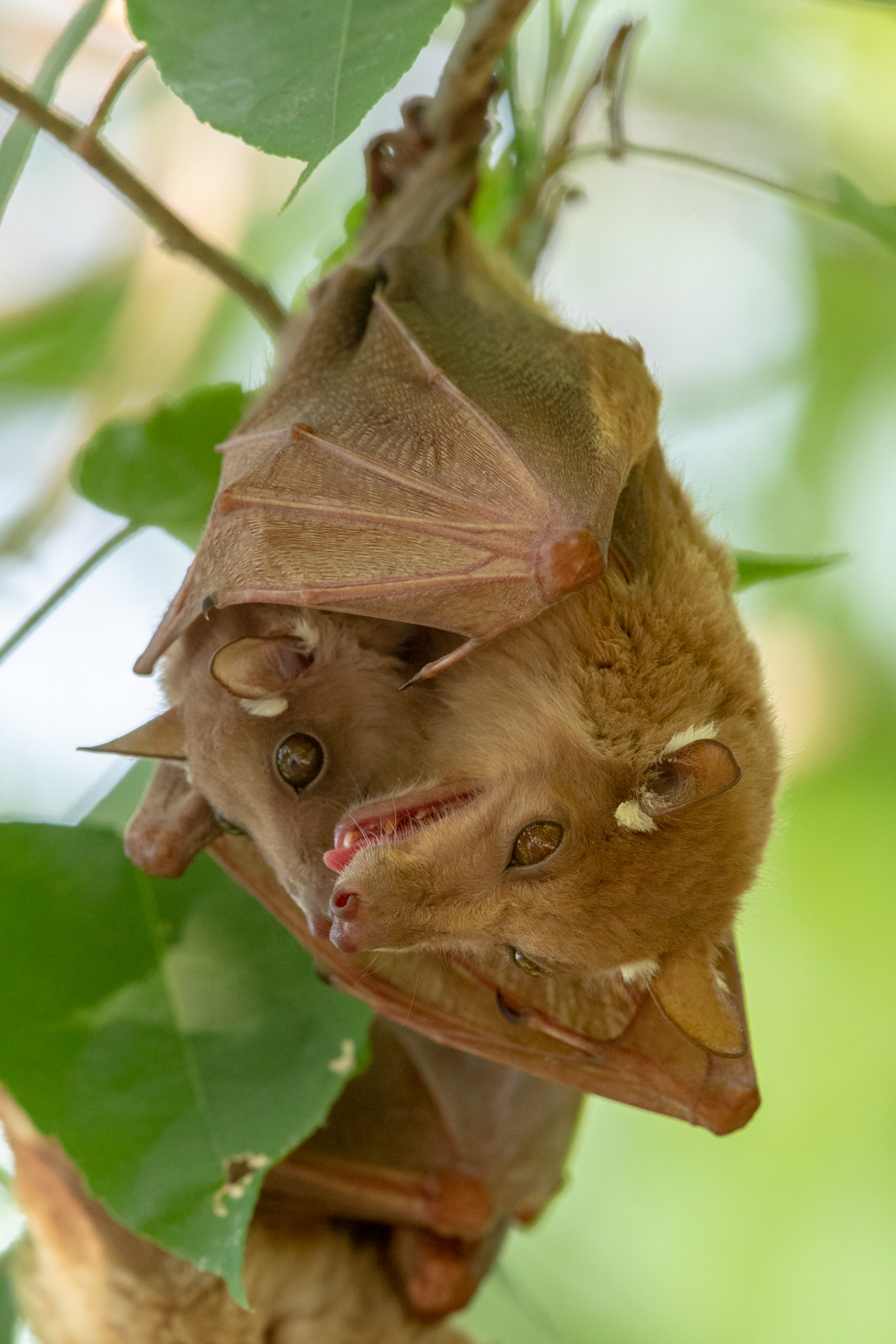
A Peters's Epauletted Fruit Bat mother cradles her baby with her wings (image by Mark Beaman)

Impala male portrait (image by Mark Beaman)
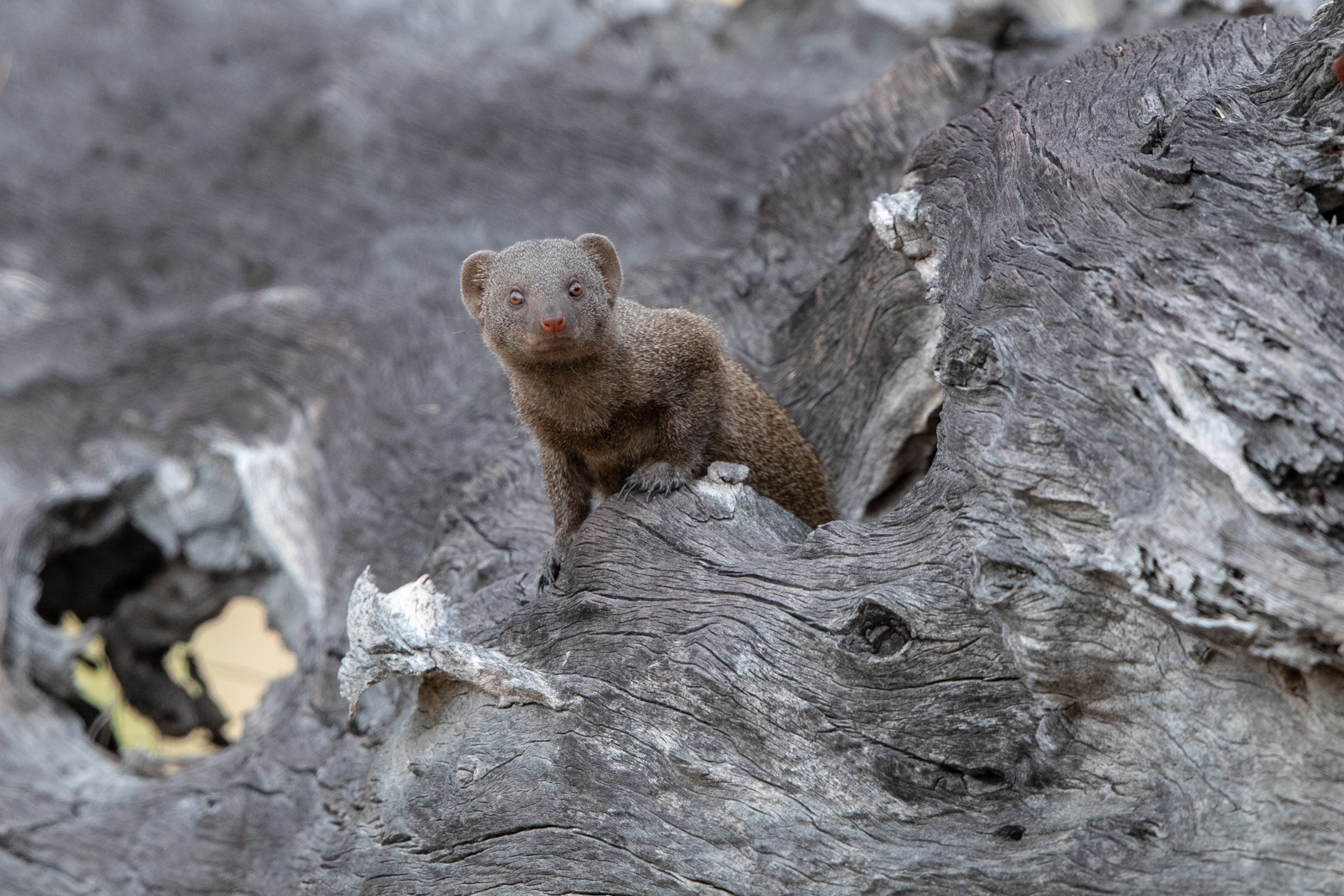
An inquisitive Dwarf Mongoose (image by Mark Beaman)
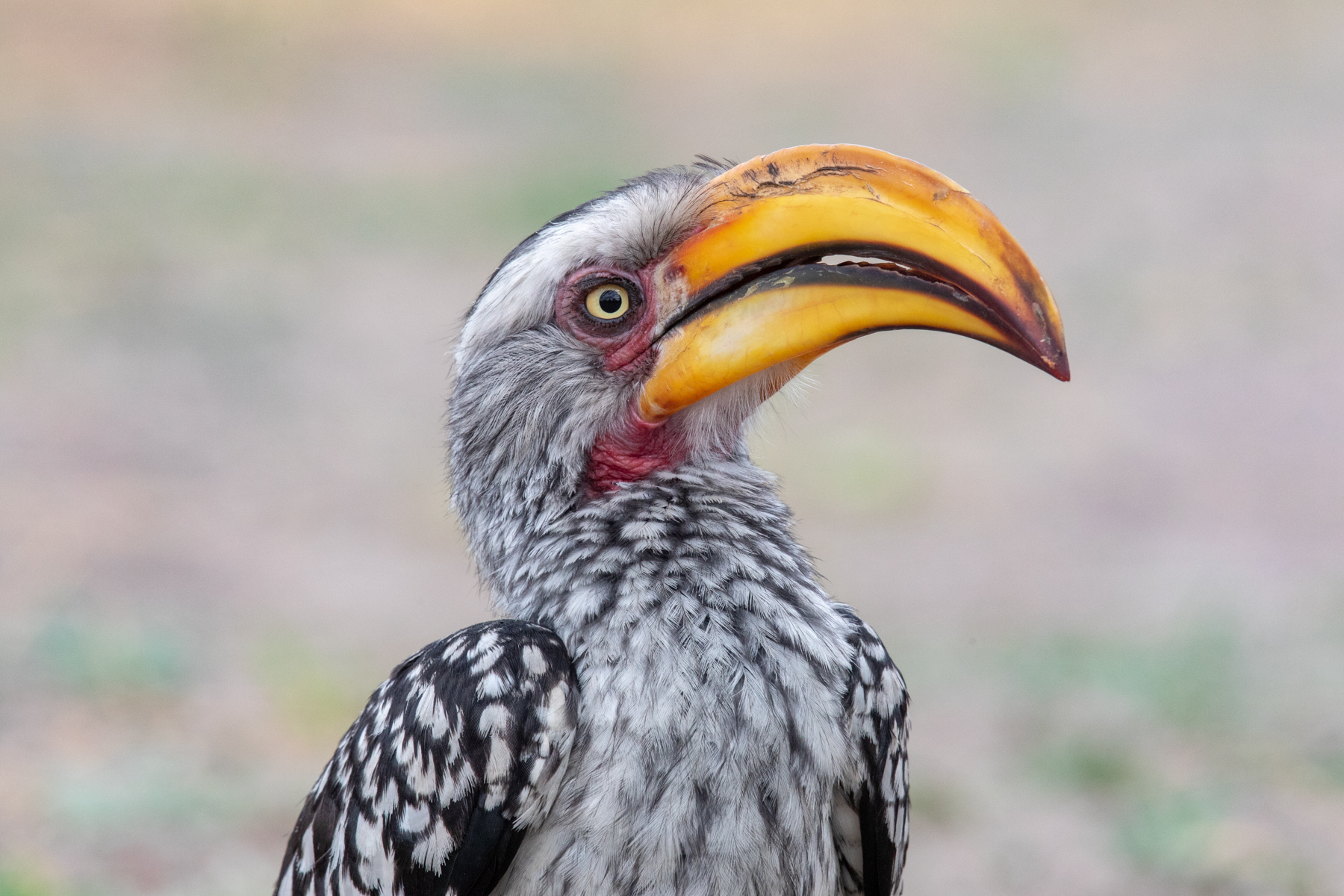
Southern Yellow-billed Hornbill portrait (image by Mark Beaman)
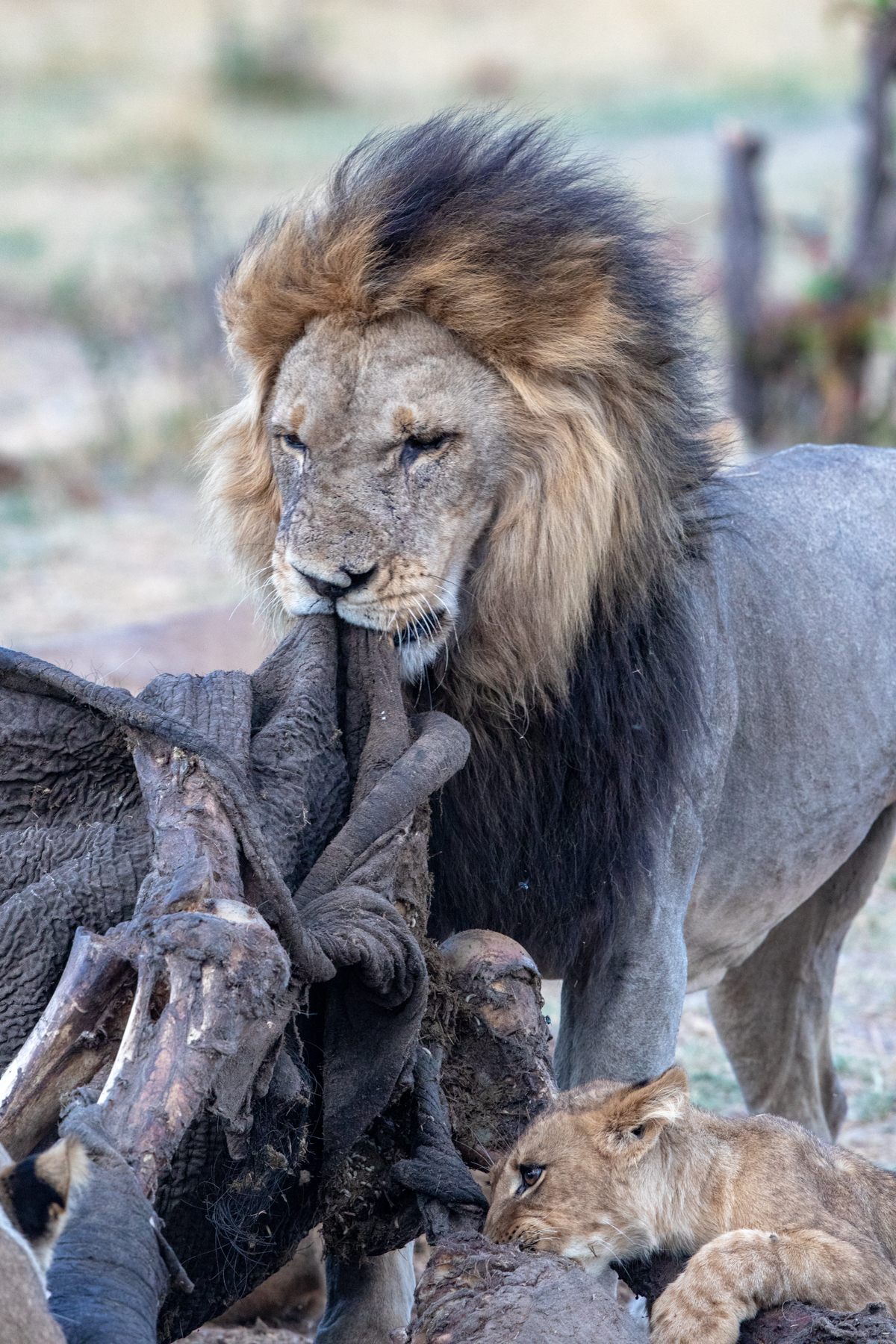
A male Lion from the Marsh Pride drags the almost-consumed carcass of a young elephant at Savuti, Botswana (image by Mark Beaman)
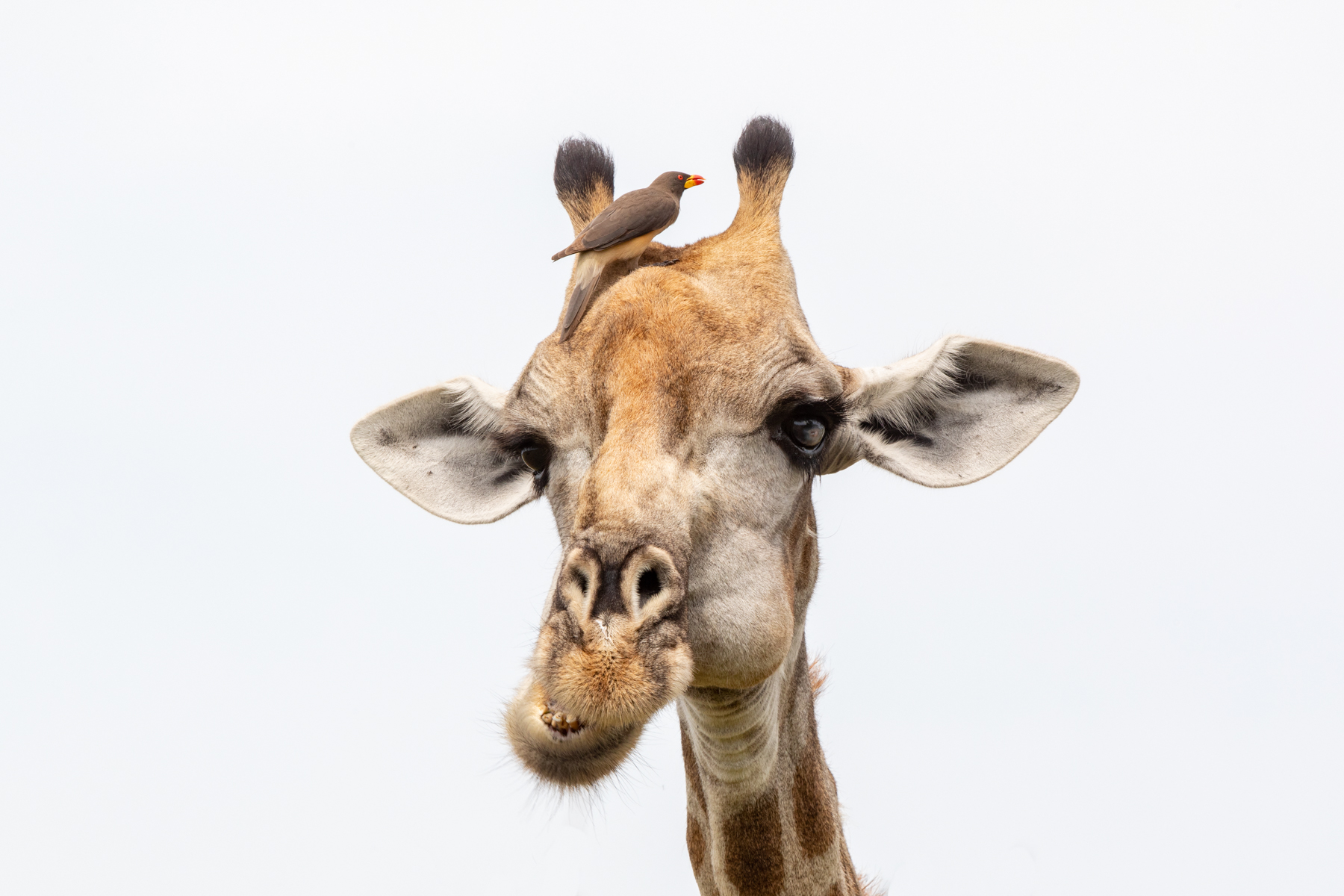
Oxpeckers are so annoying! Southern Giraffe and Yellow-billed Oxpecker on our Botswana safari (image by Mark Beaman)
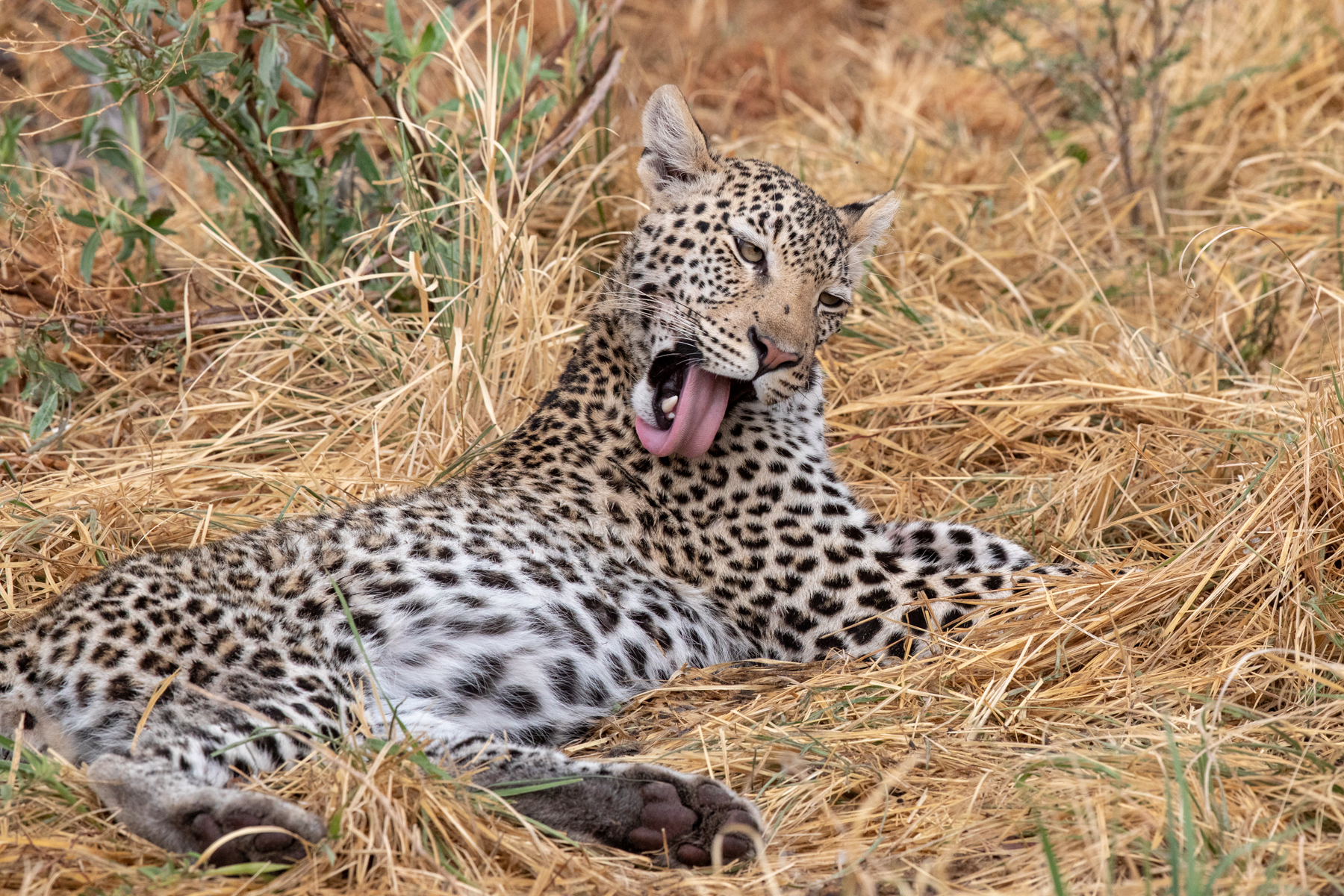
Cats, even large ones, are clean creatures. A Leopard grooms itself after its siesta (image by Mark Beaman)
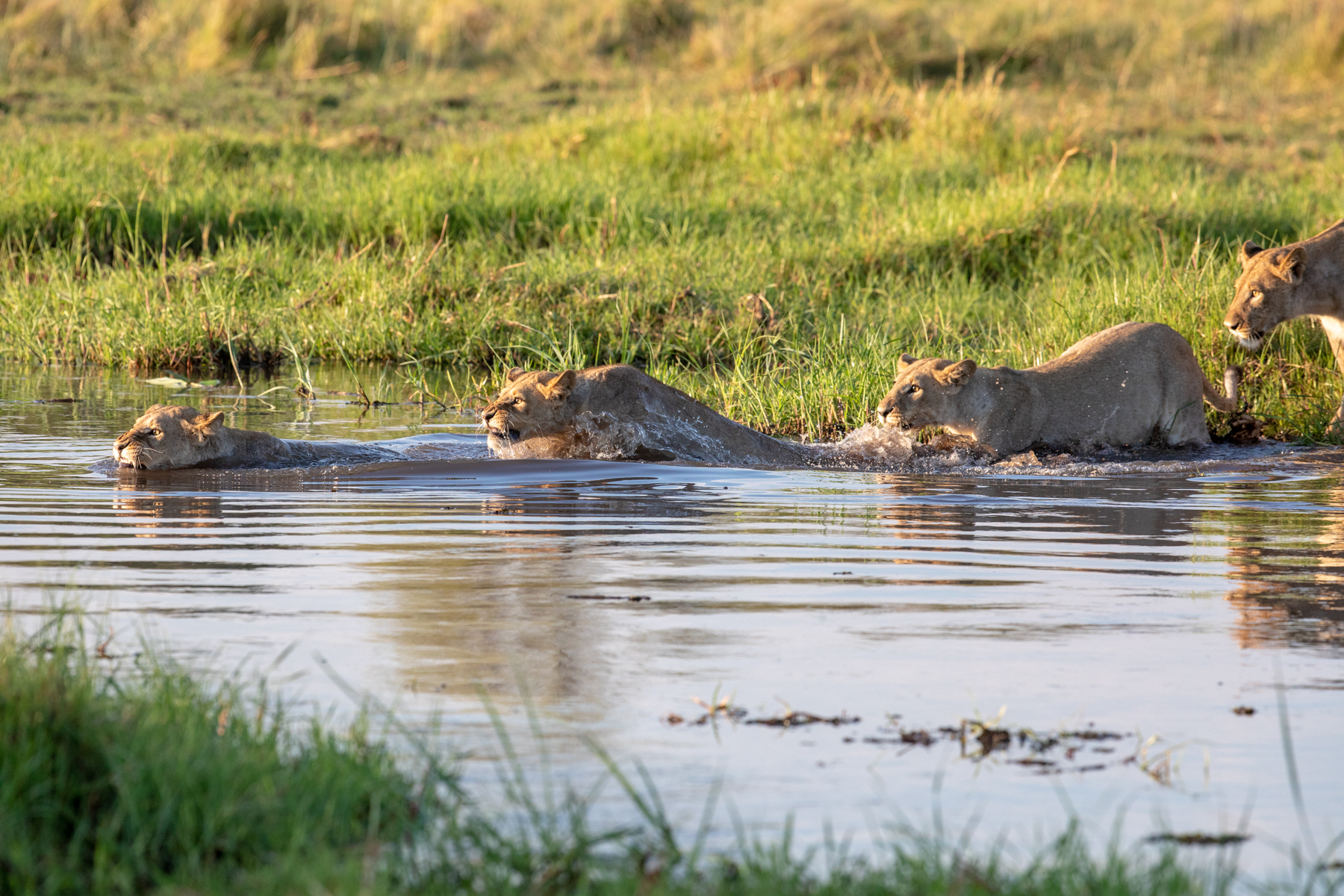
Follow my leader: lions crossing a river (image by Mark Beaman)
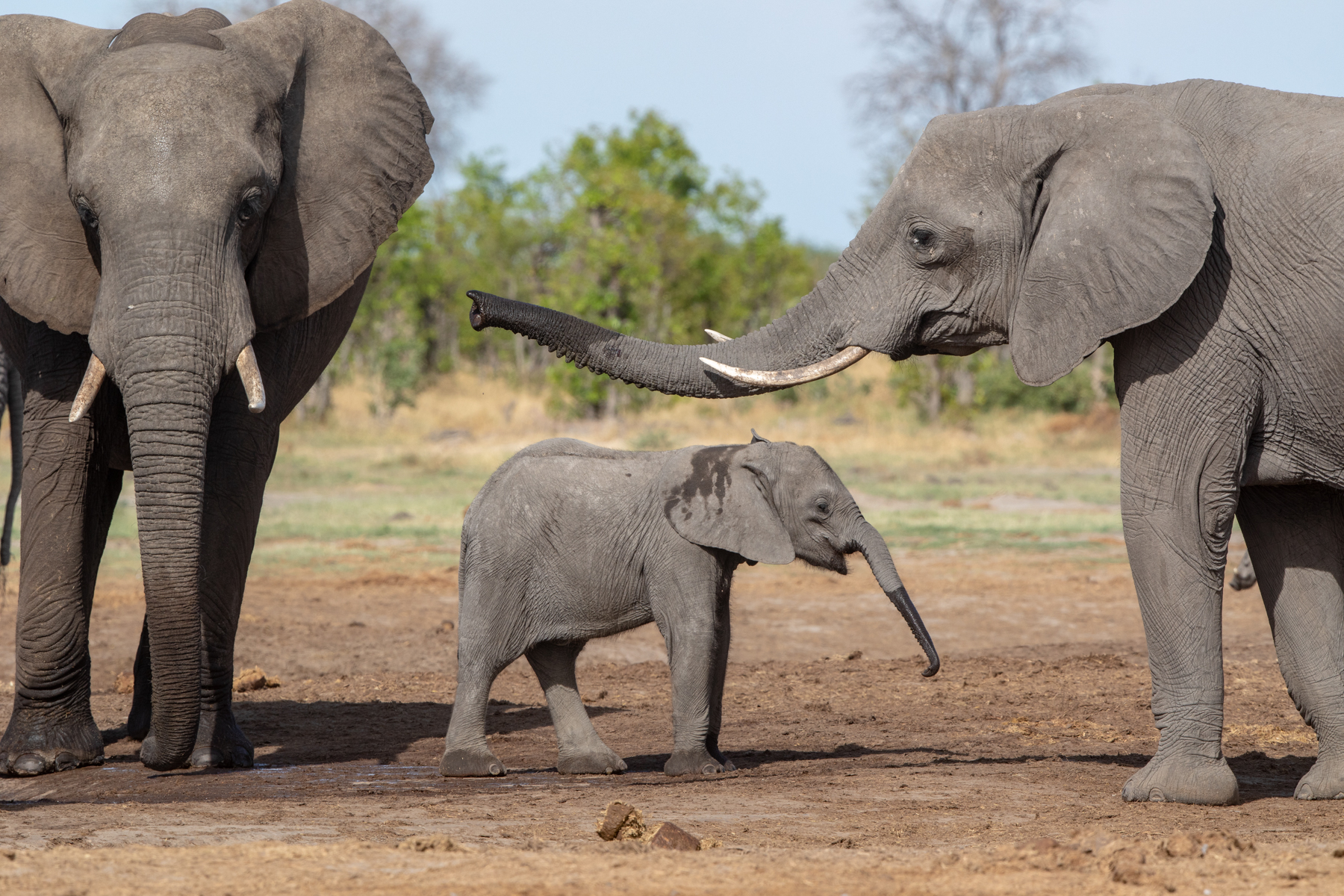
Three generations of African Elephants (image by Mark Beaman)
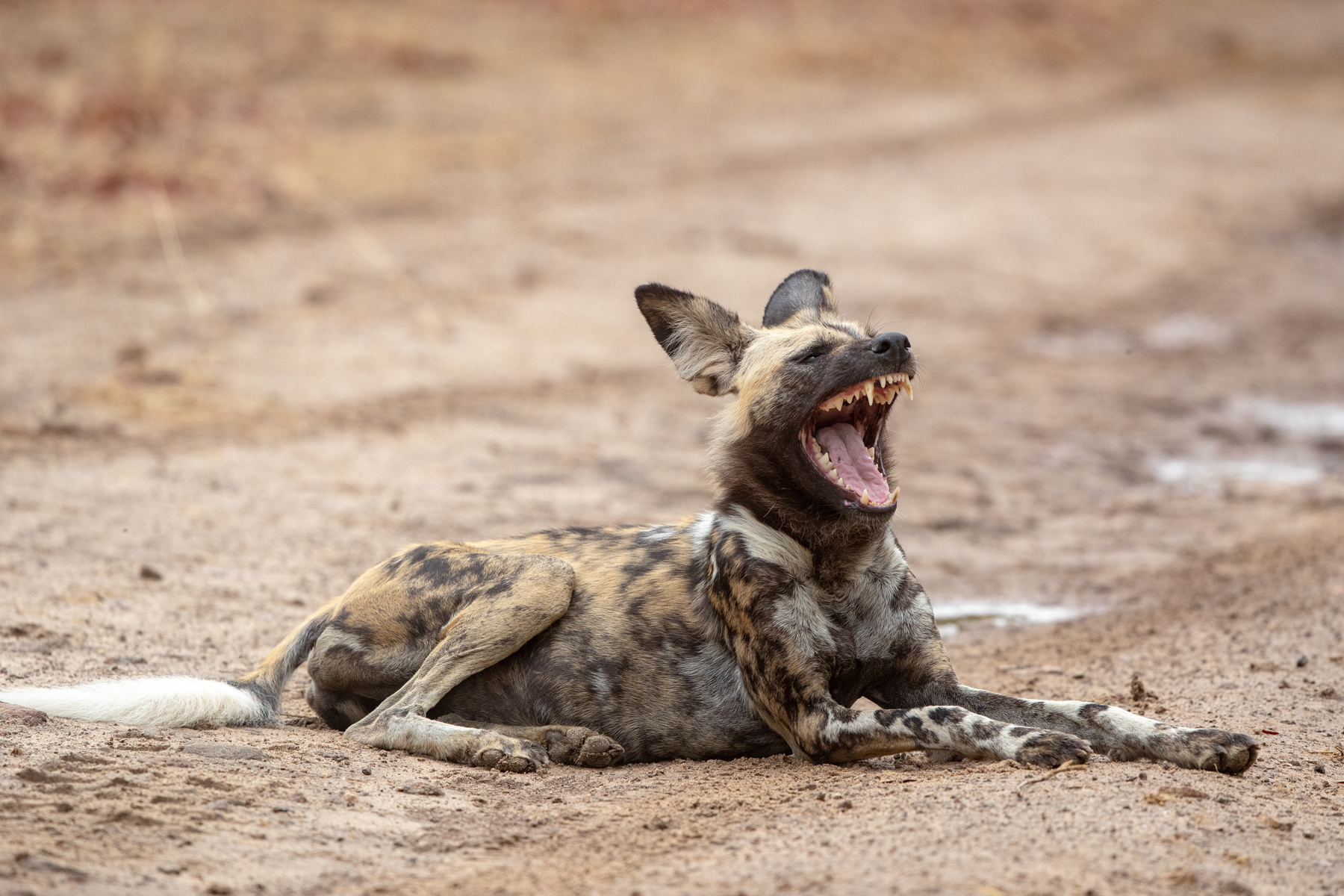
The Painted Wolf (or African Wild Dog) is a fearsome predator (image by Mark Beaman)
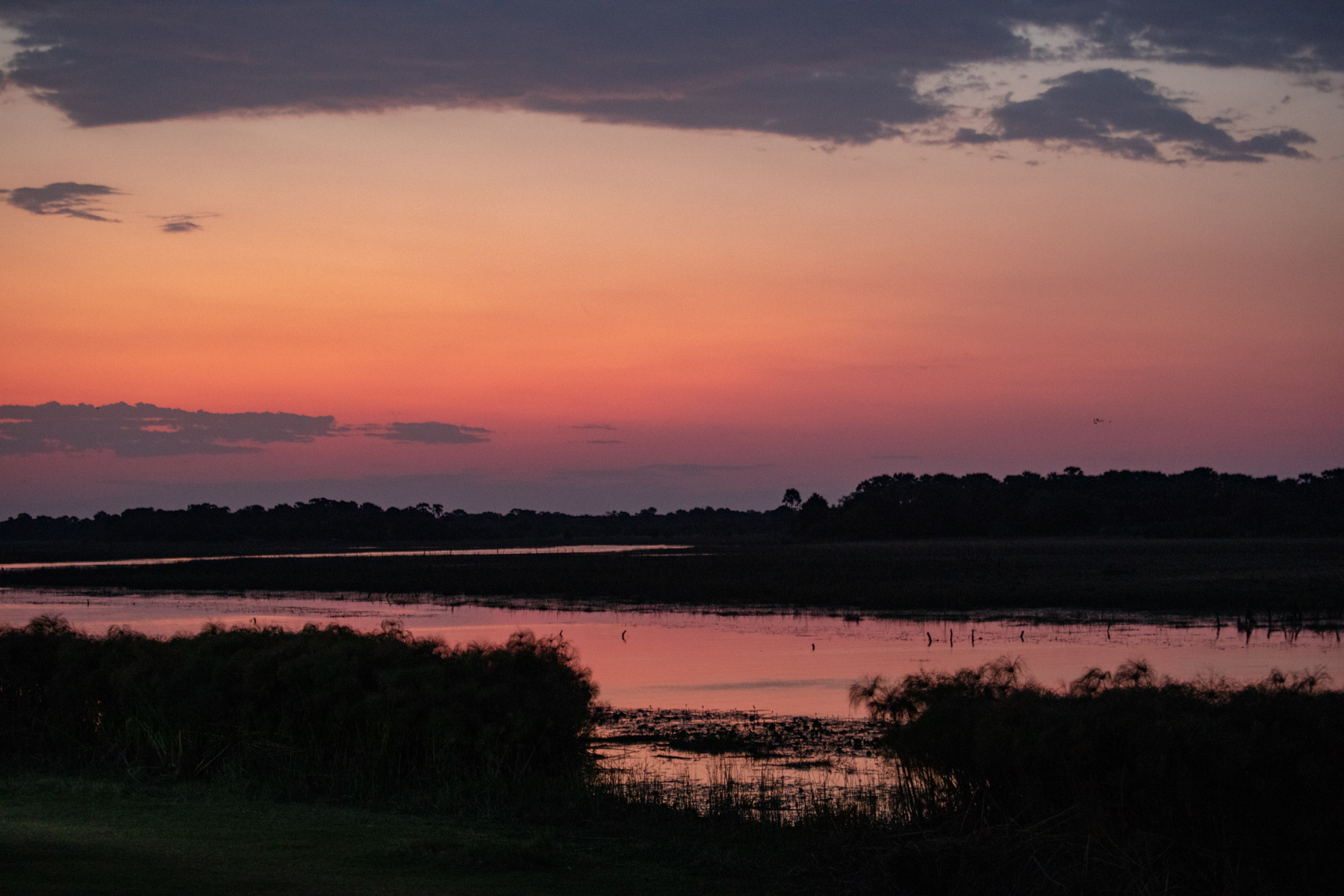
Botswana's Okavango at dusk (image by Mark Beaman)
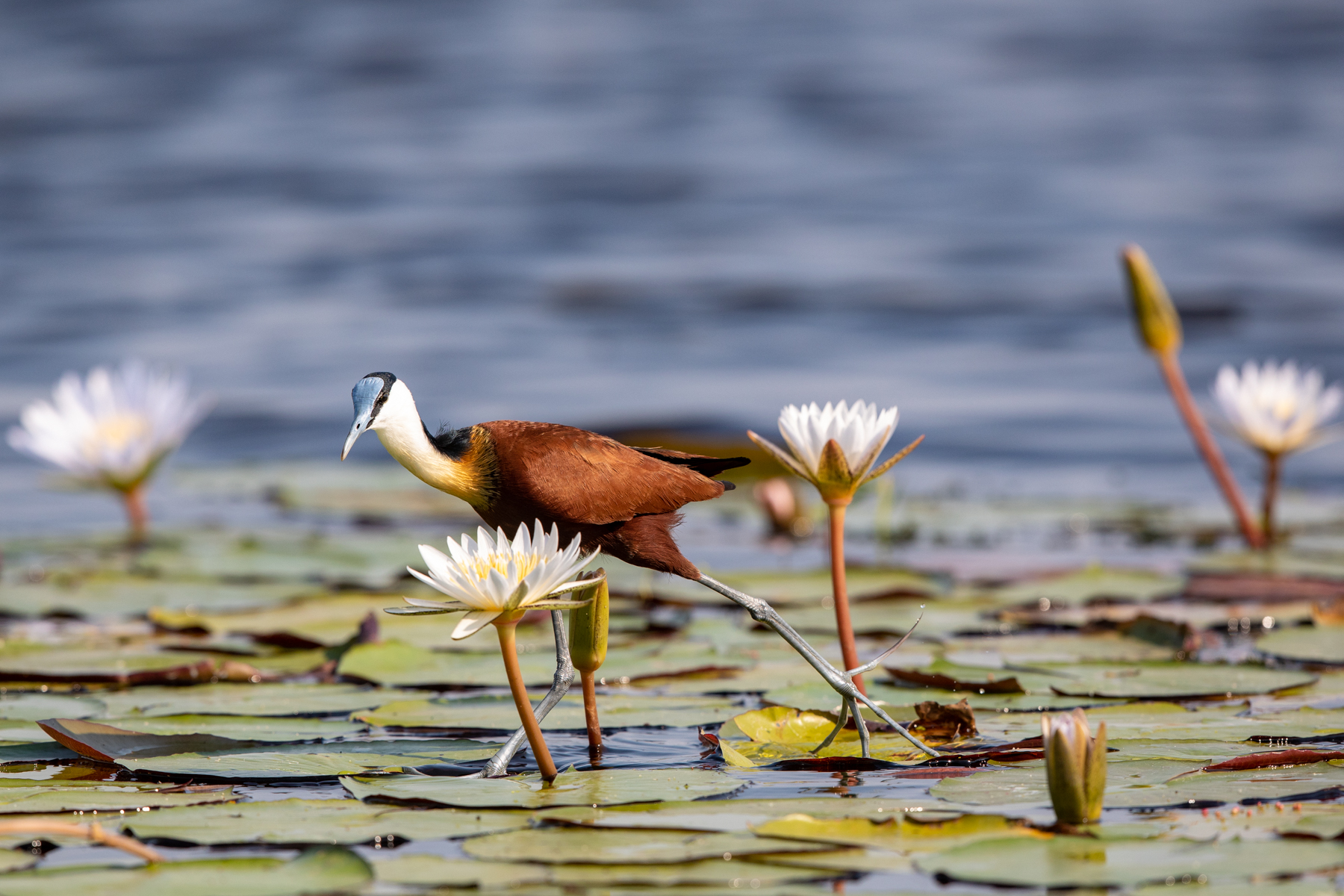
The African Jacana uses its elongated toes to spread its weight as it walks over the lily pads (image by Mark Beaman)
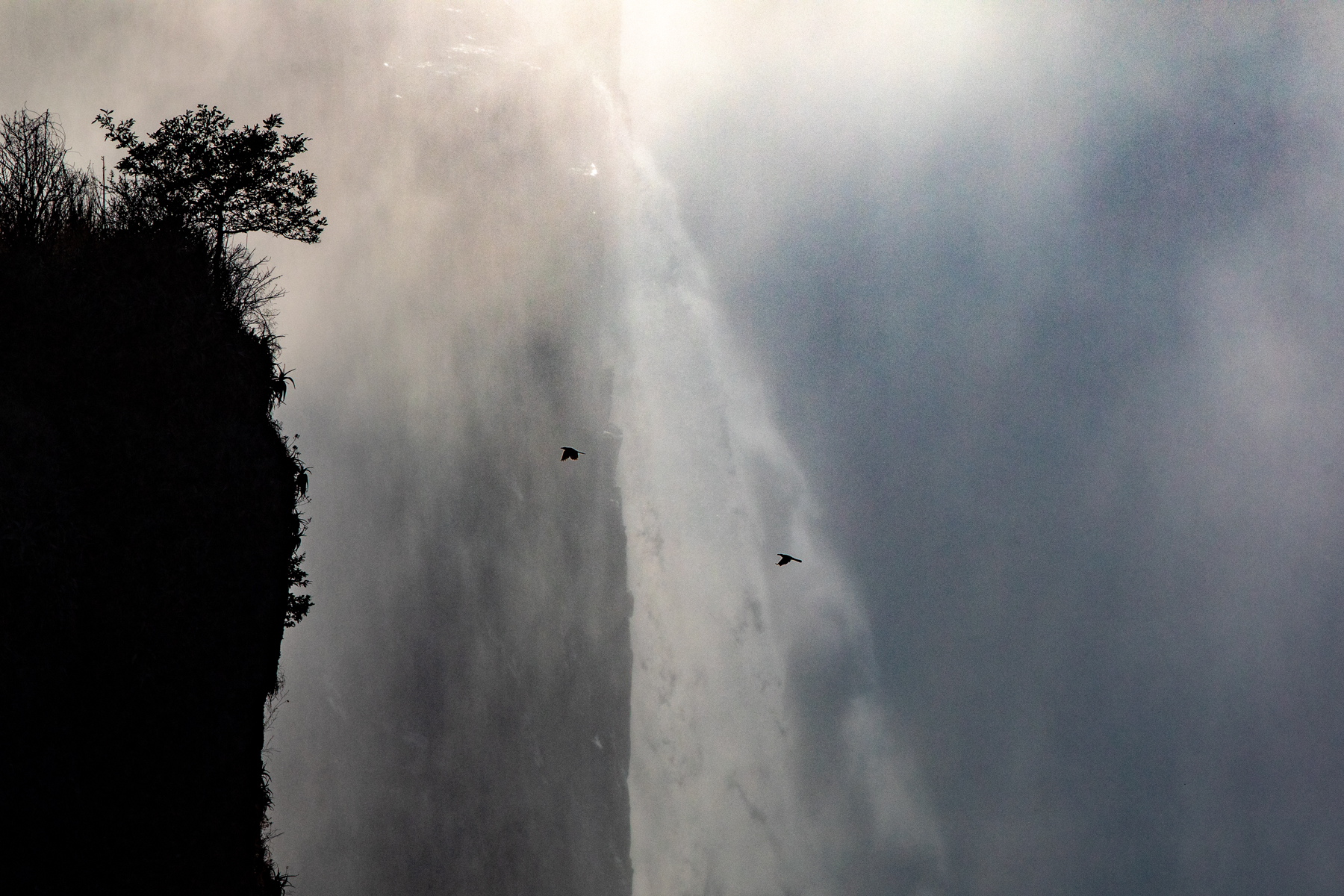
Two birds are dwarfed by the watery immensity of the Victoria Falls (image by Mark Beaman)

A huddle of Commnon Ostrich chicks (image by Inger Vandyke)
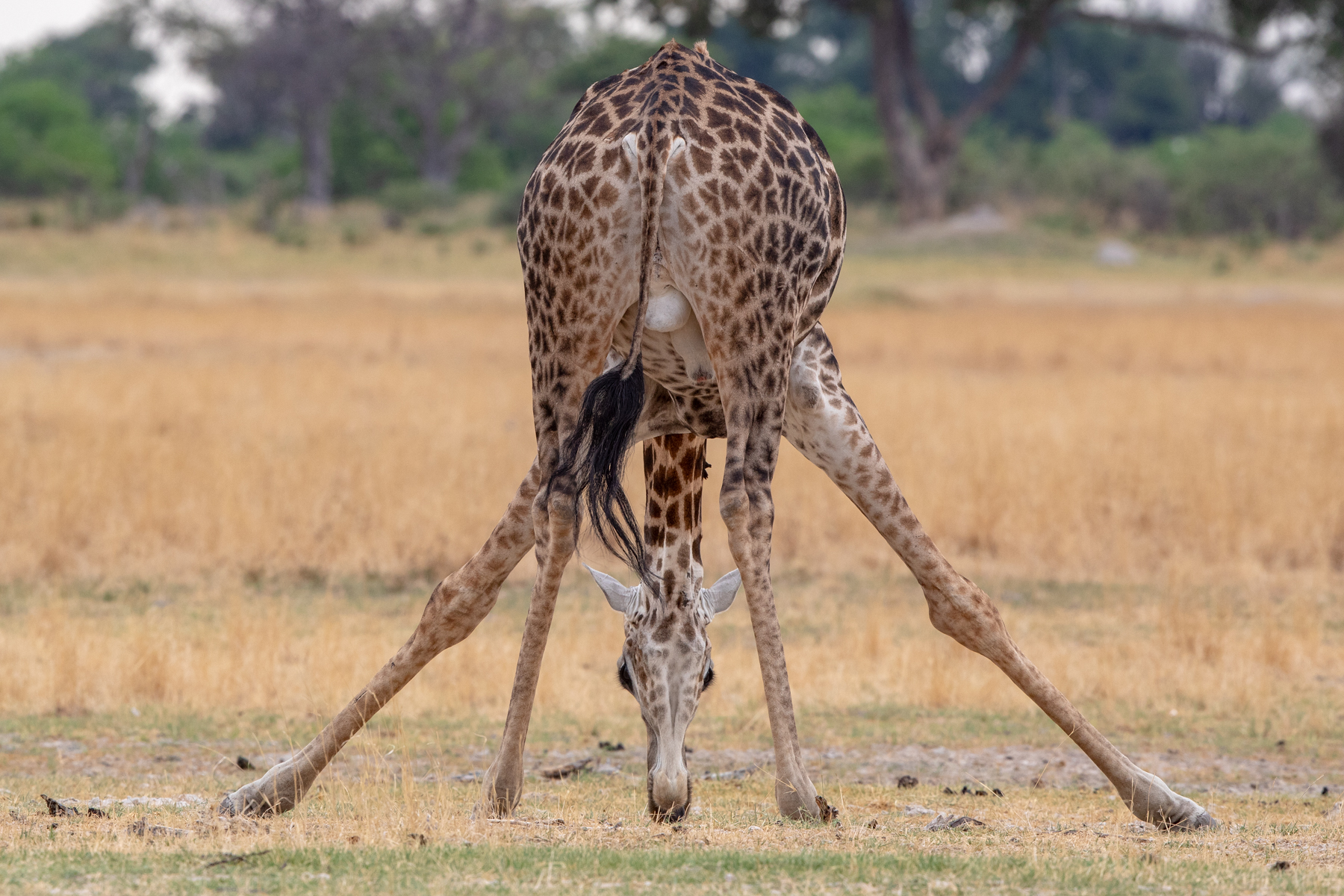
There are few things stranger than a giraffe feeding from the ground. This is a Southern Giraffe in Botswana (image by Mark Beaman)
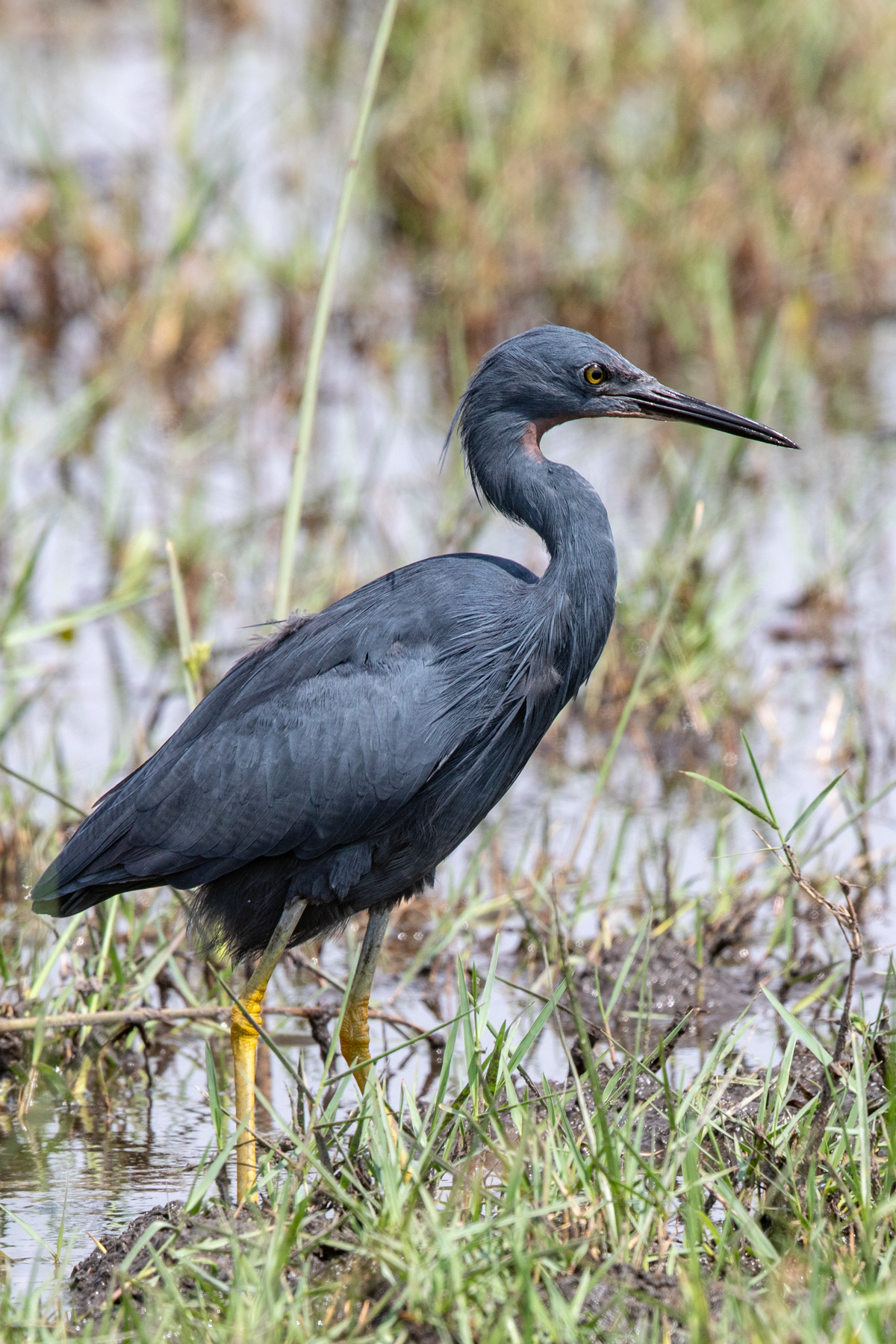
The rare and endangered Slaty Egret is the star bird of the Okavango Delta, Botswana (image by Mark Beaman)

Backlit Impalas browsing at sunrise (image by Mark Beaman)

Vervet Monkey mother and baby (image by Mark Beaman)
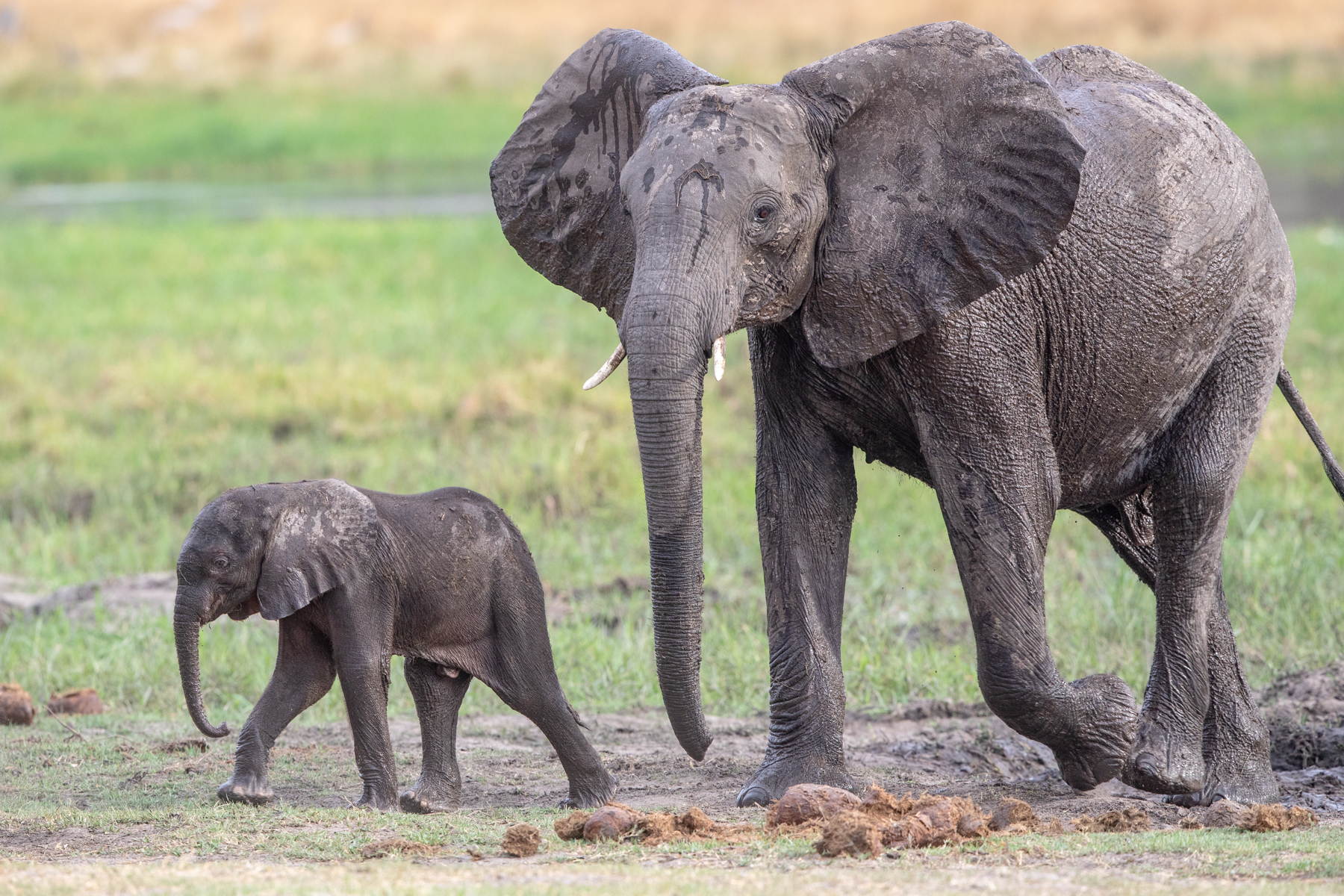
Baby and adolescent, after a bath (image by Mark Beaman)
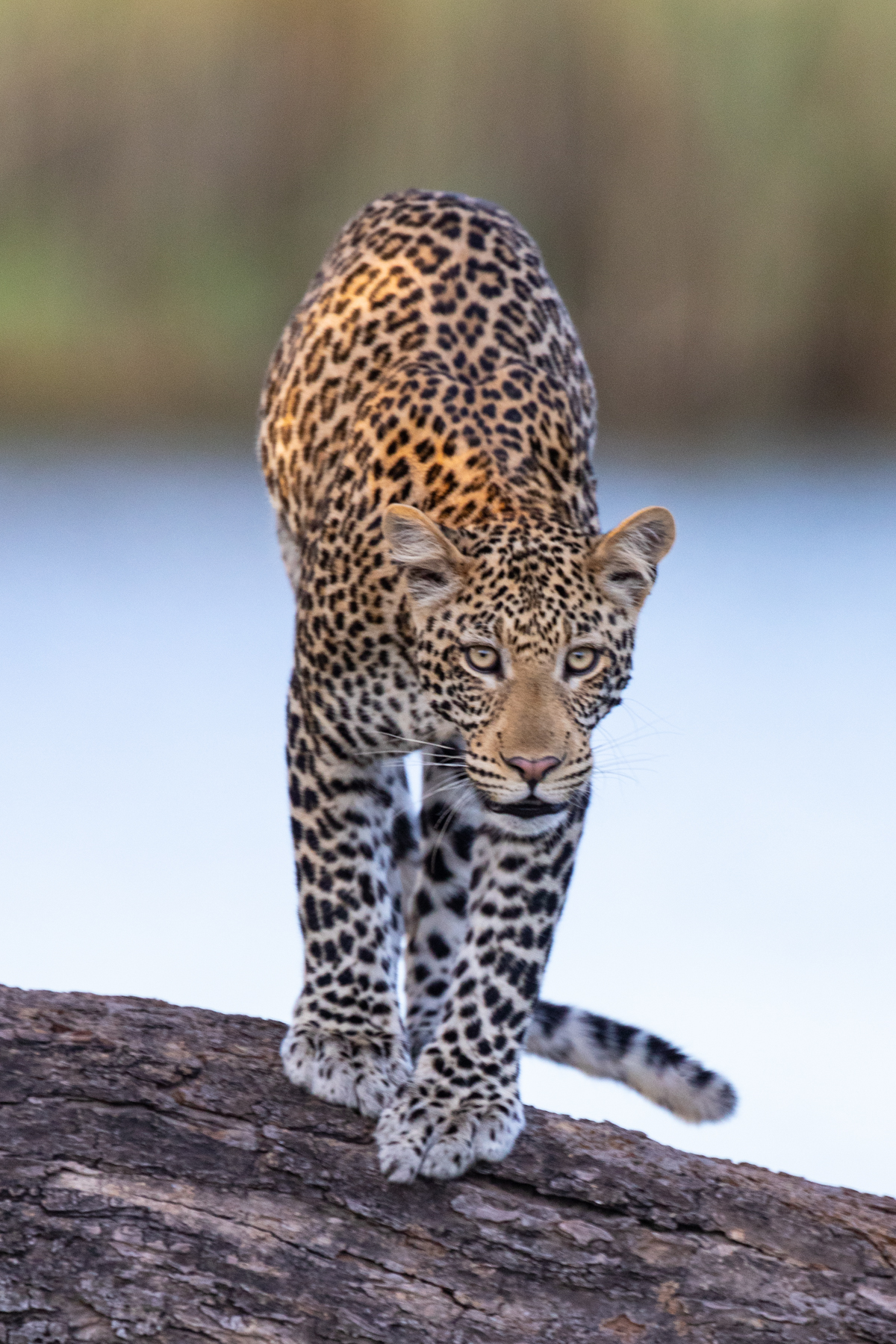
Leopard portrait (Inger Vandyke)

The unique, marmalade-coloured Pel's Fishing Owl (image by Mark Beaman)
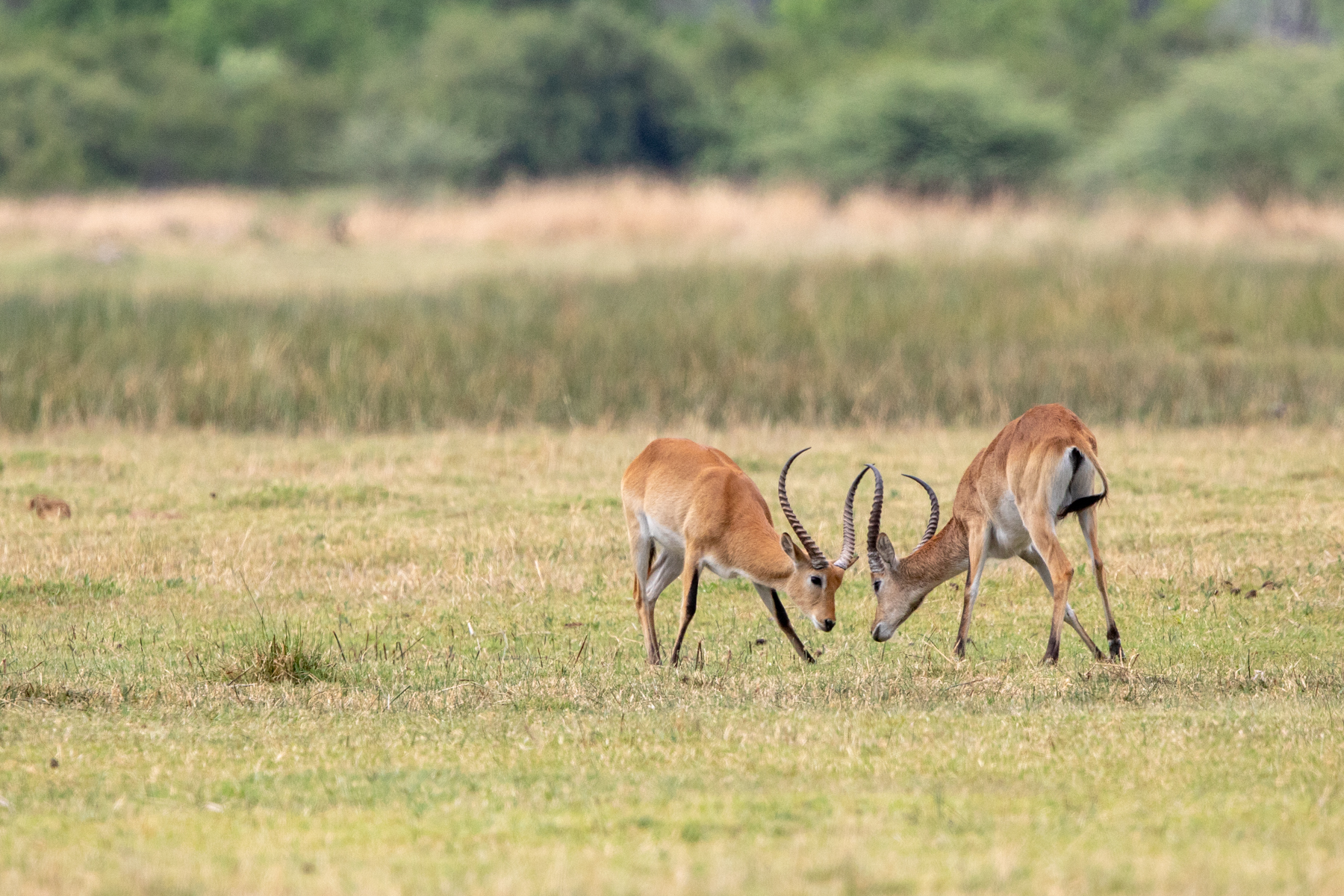
Male Red Lechwes sparring. Red Lechwe's are an antelope of seasonally-flooded grasslands bordering swamps (image by Mark Beaman)
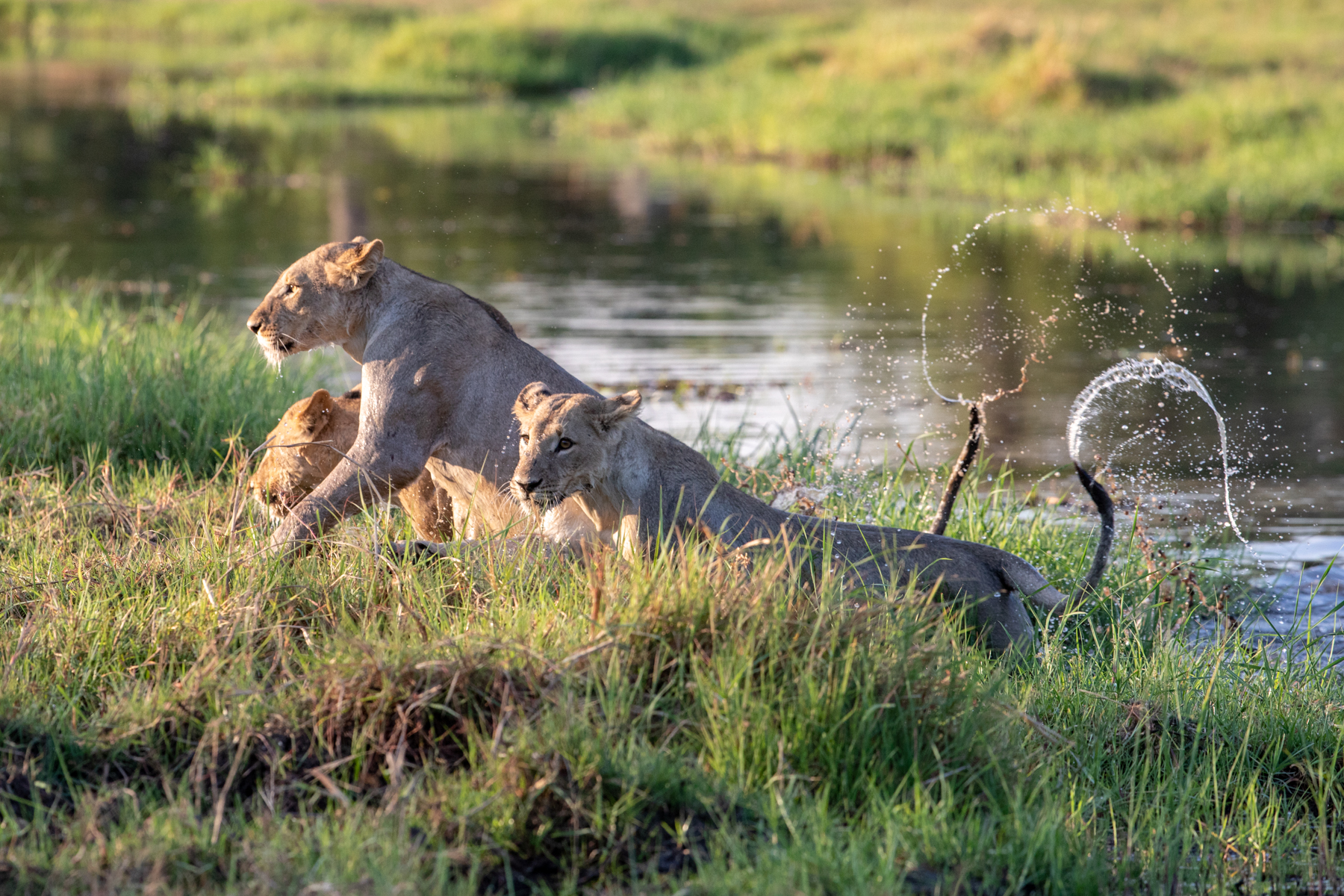
Lions shake off the water after a river crossing (image by Mark Beaman)
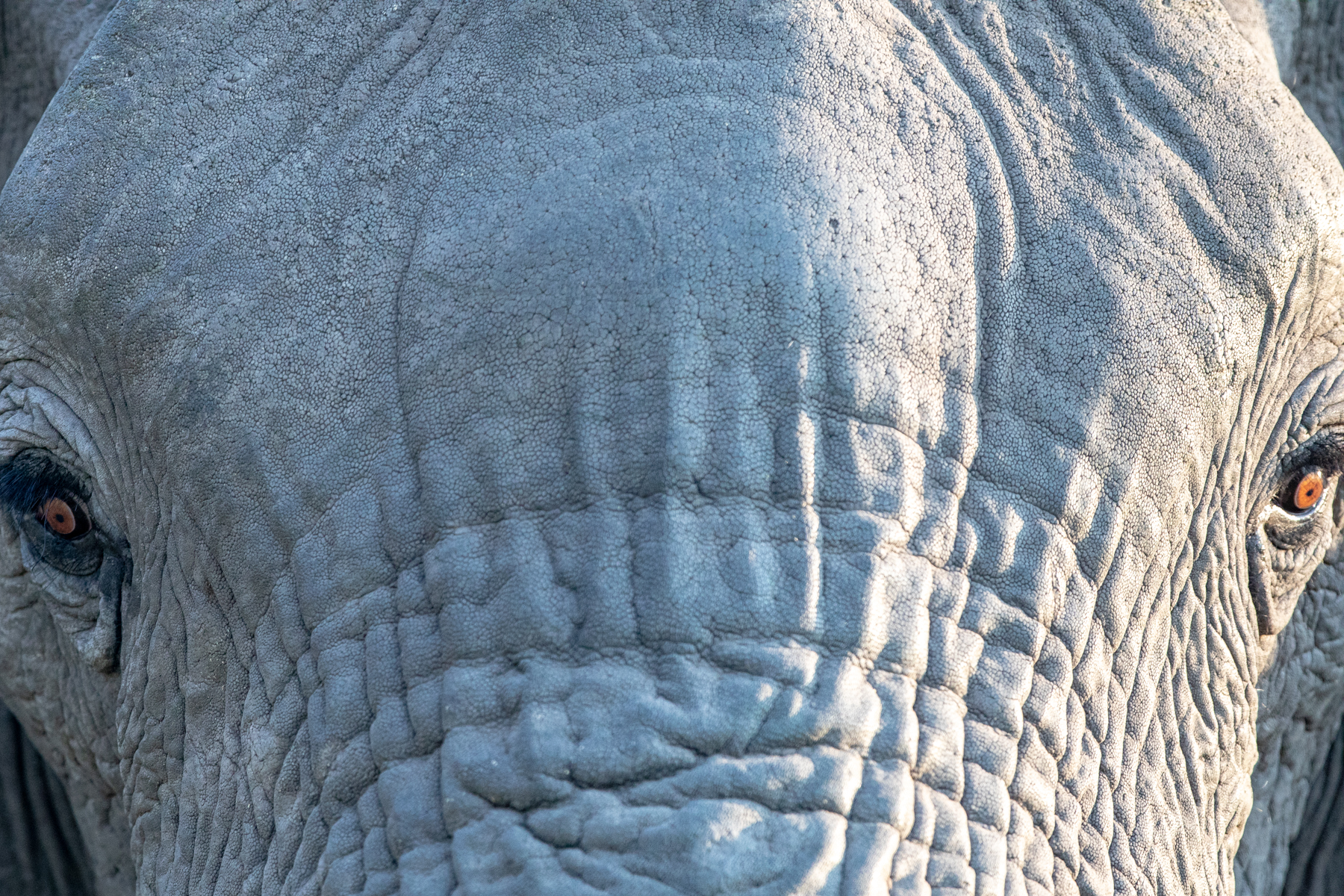
African Elephant detail (image by Mark Beaman)
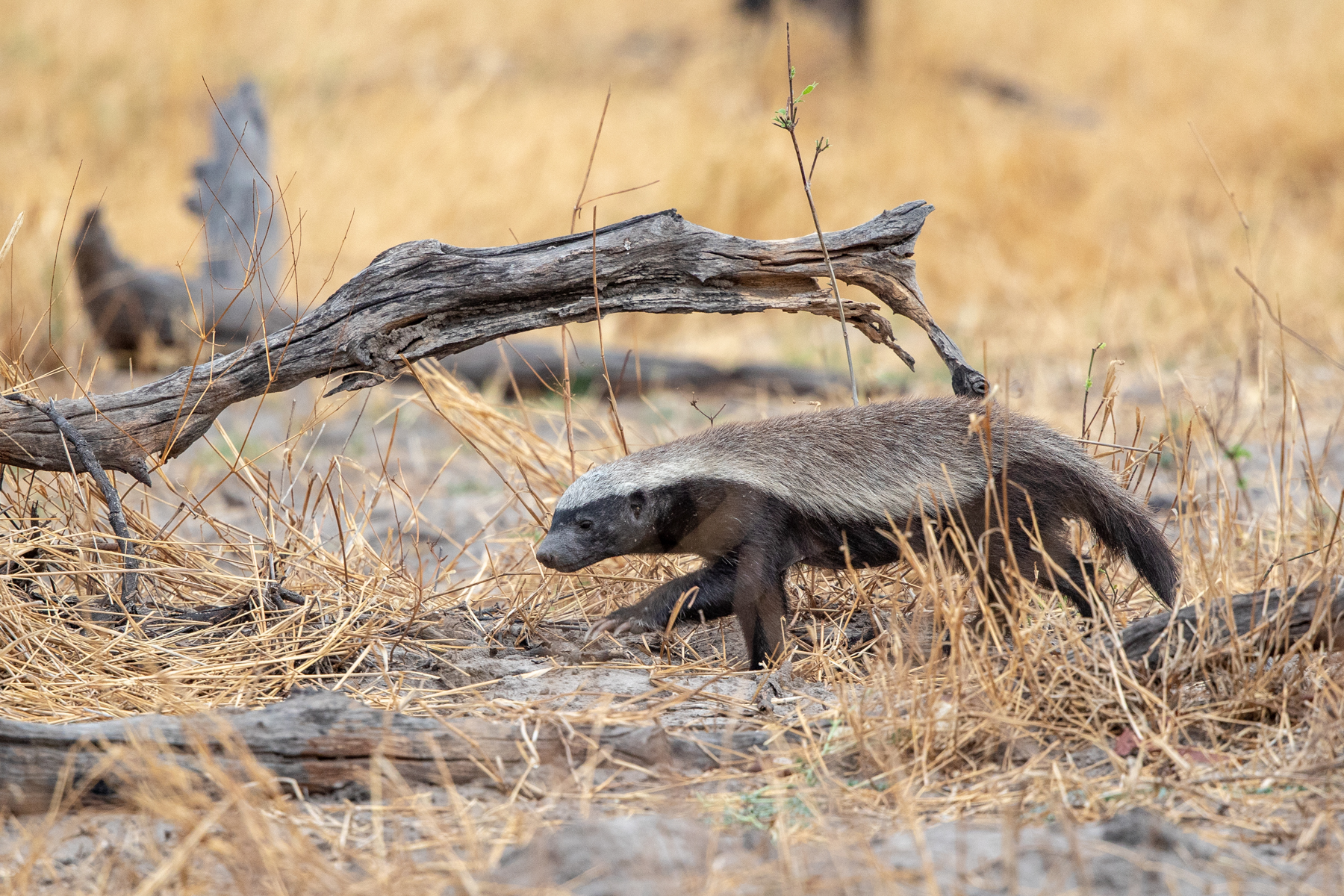
Honey Badgers may not be big, but they make up for it with remarkable strength and courage (image by Mark Beaman)

There is nothing like a good drink after a mud bath (image by Mark Beaman)

A Leopard in a riverside tree at Chobe National Park, Botswana (image by Mark Beaman)
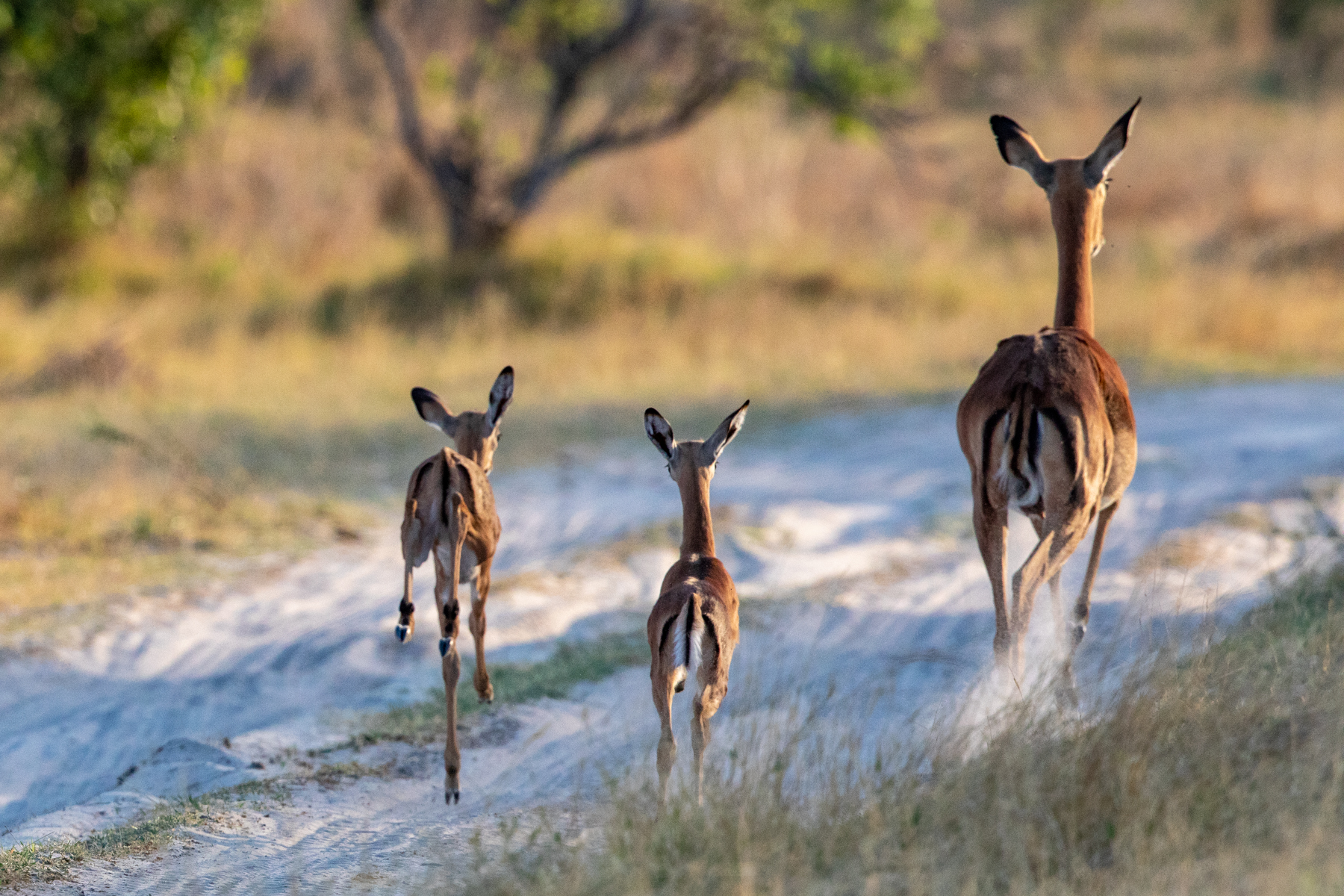
An Impala family race away, one of the calves 'pronking' as it goes (image by Mark Beaman)
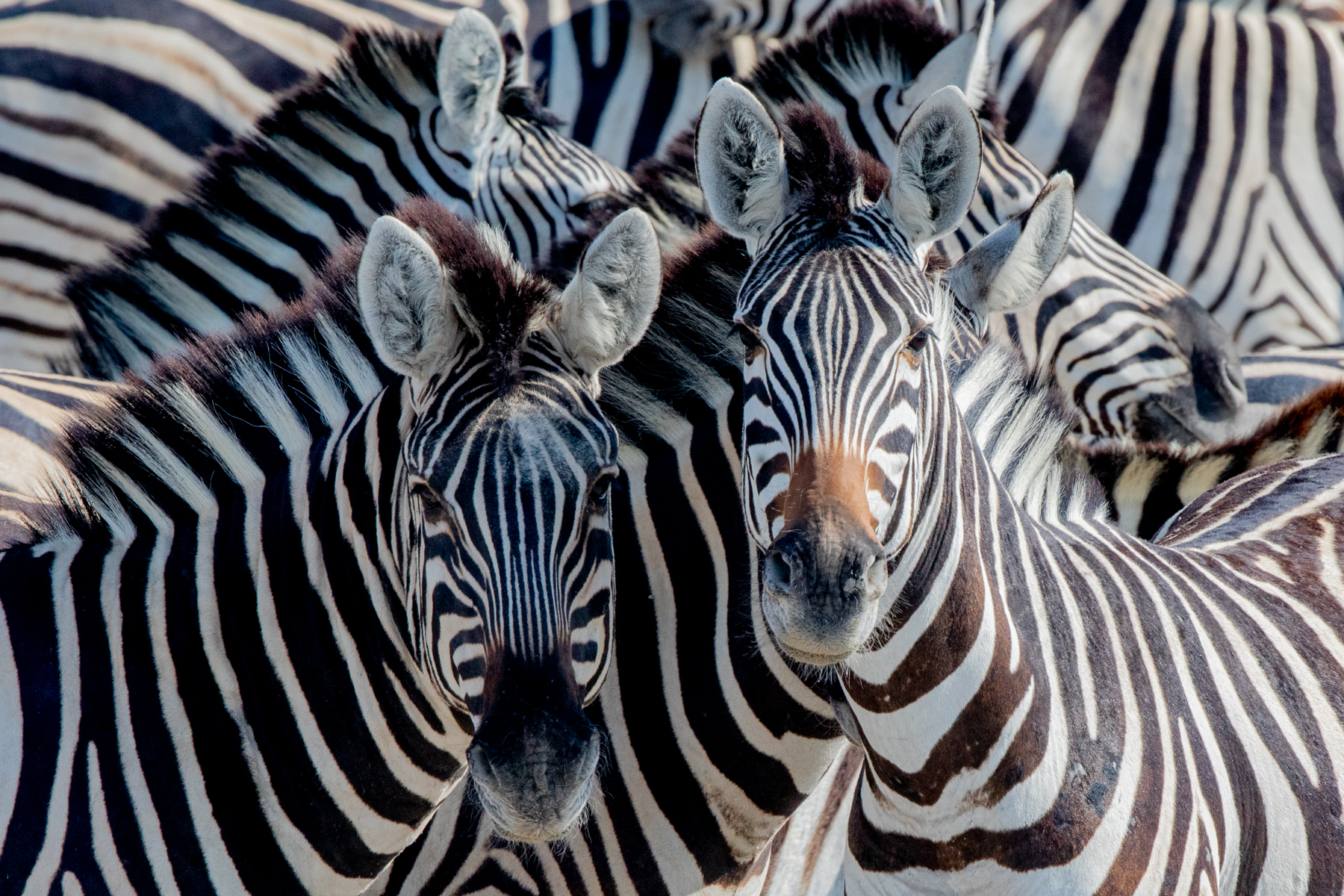
Common Zebra kaleidascope (image by Inger Vandyke)
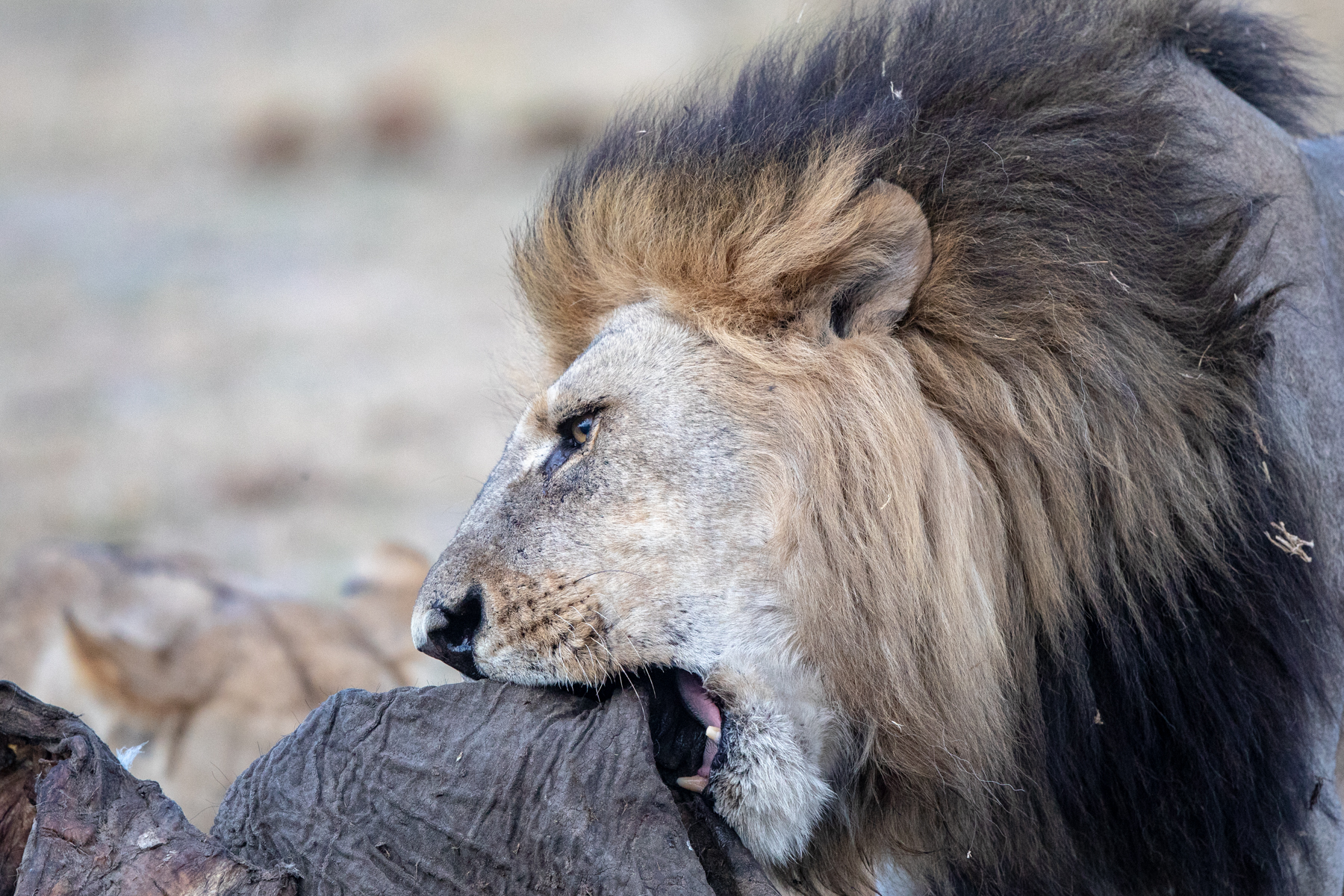
Male Lion chewing away on elephant hide. The darker the mane the more dominant the individual (image by Mark Beaman)
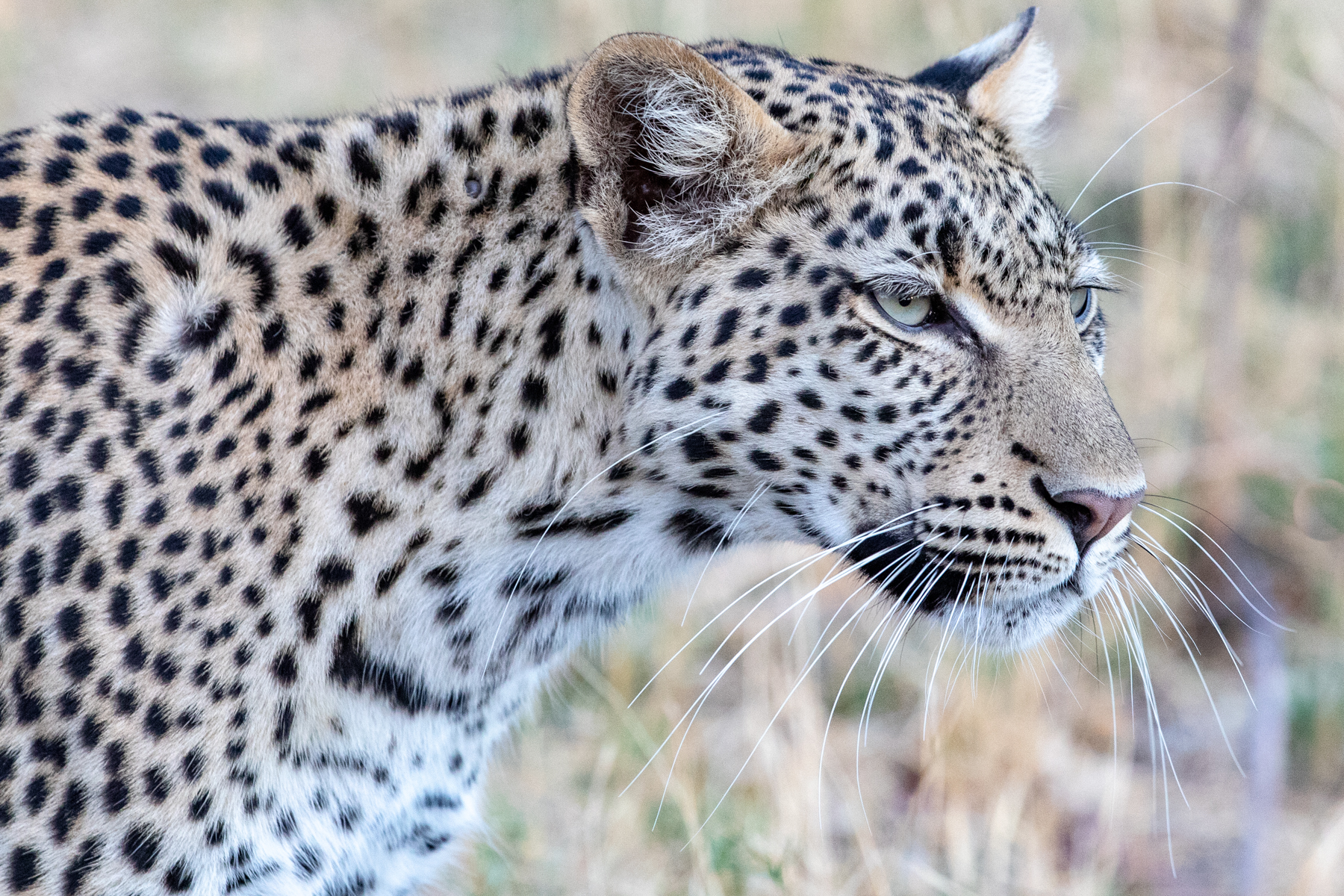
Leopard portrait (image by Mark Beaman)
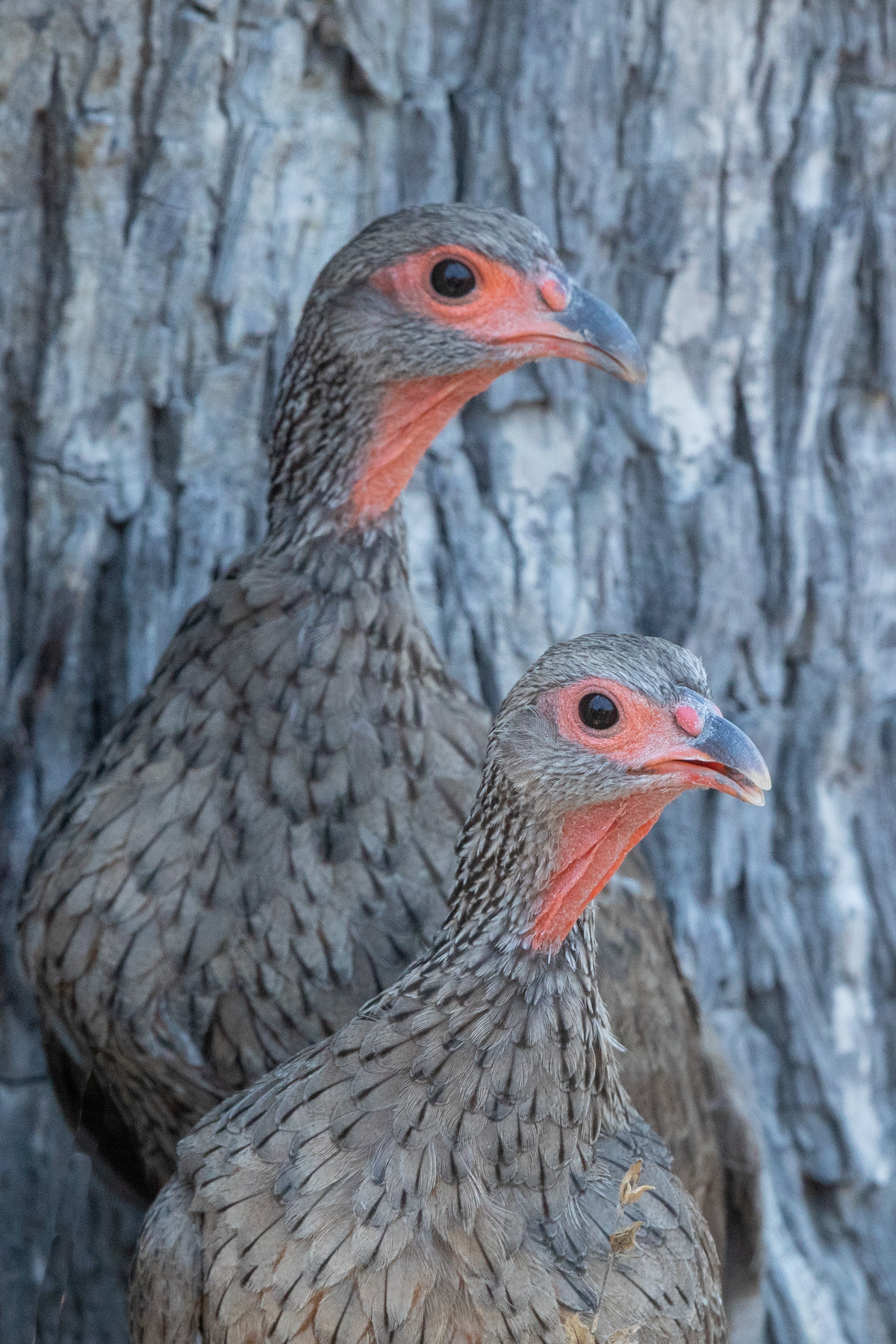
Portrait of a pair of Swainson's Francolins in Botswana (image by Mark Beaman)
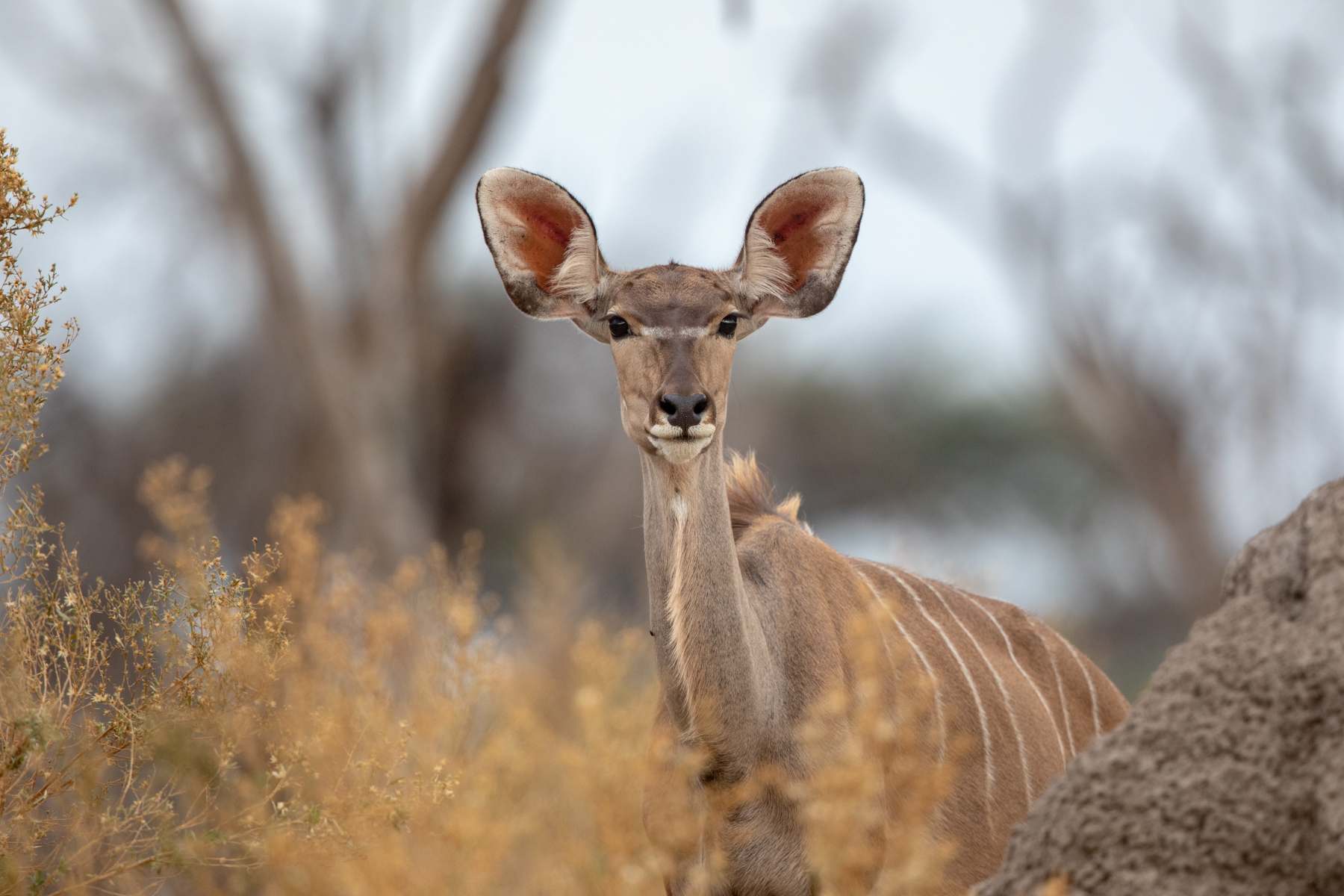
Greater Kudu female (image by Mark Beaman)

African Elephant drinking in the early morning light (image by Mark Beaman)
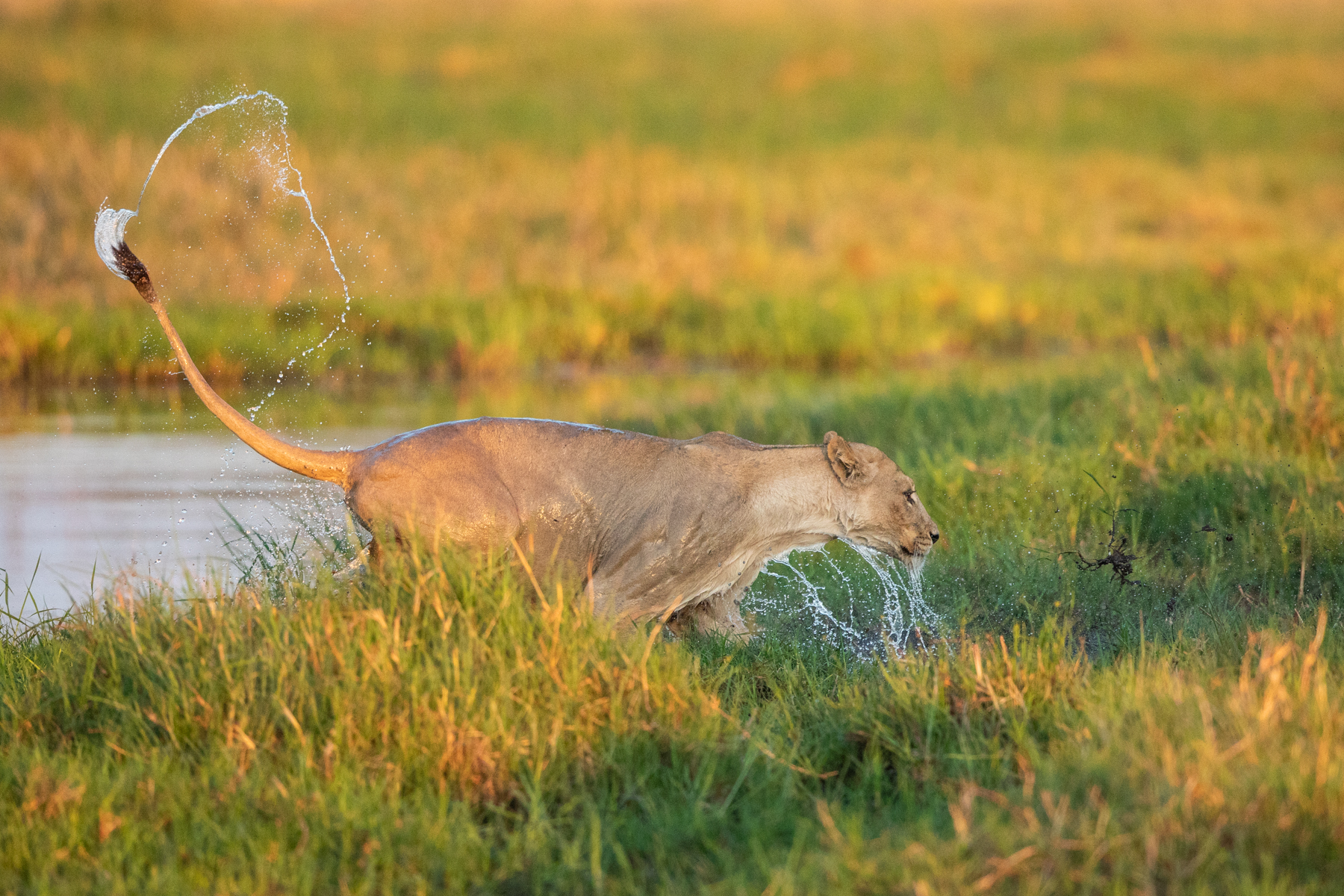
A Lioness shakes off the water after a river crossing (image by Mark Beaman)
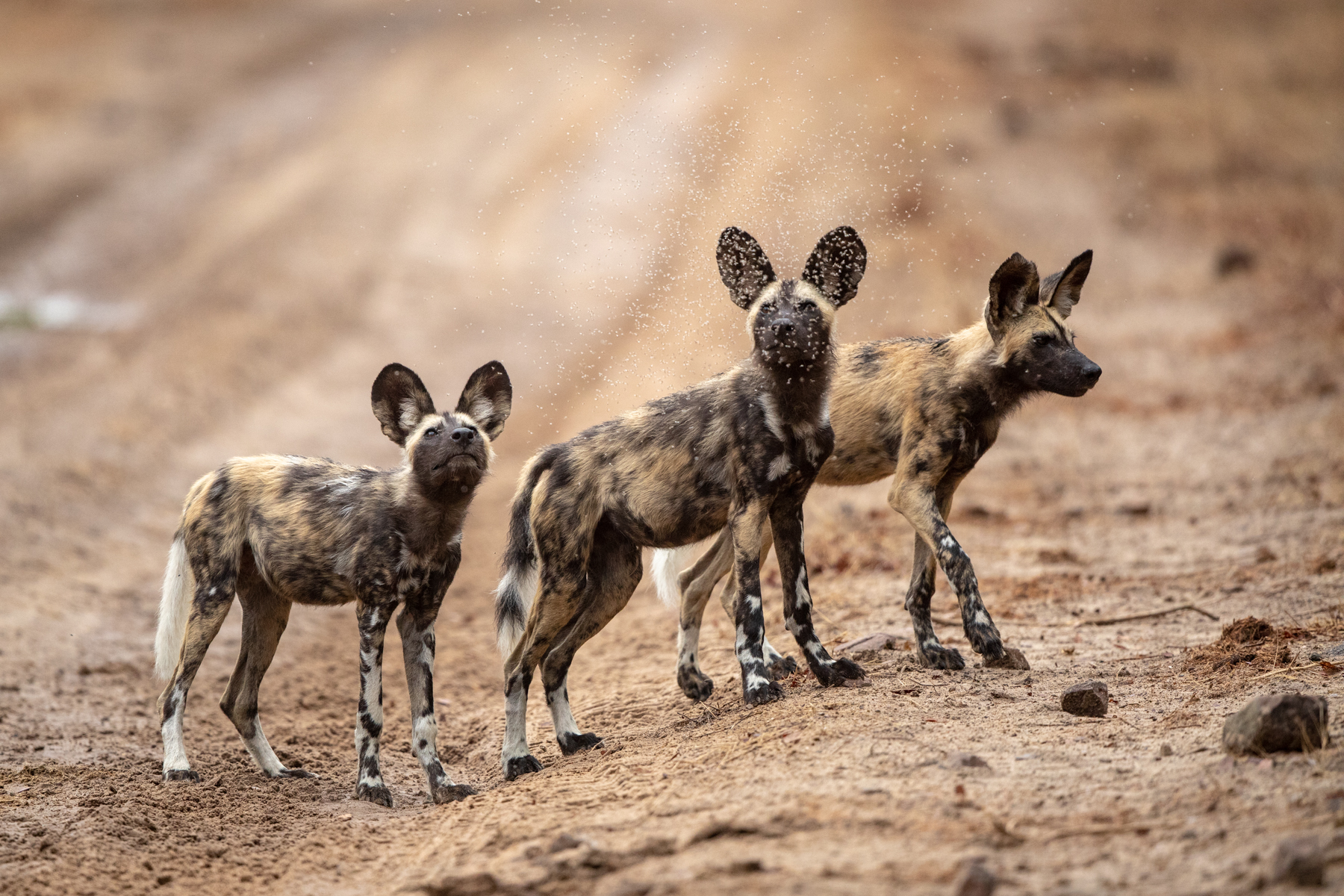
We hate those flies! Painted Wolves (or African Wild Dogs) observe their tormentors (image by Mark Beaman)
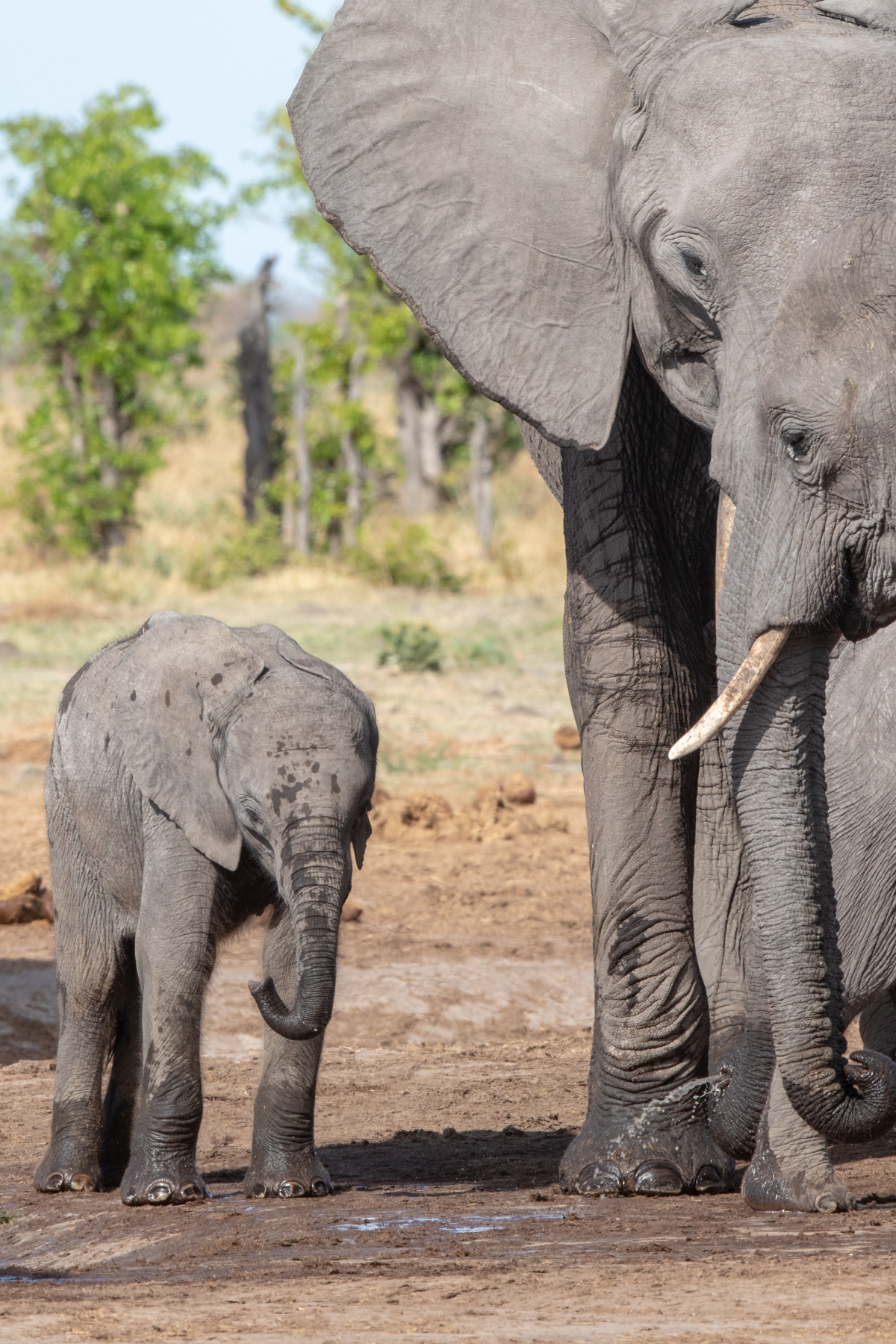
Baby African Elephant and watchful guardians (image by Mark Beaman)

Common (or Plains) Zebras (image by Mark Beaman)

Painted Wolves (also known as African Wild Dogs) greet each other (image by Mark Beaman)
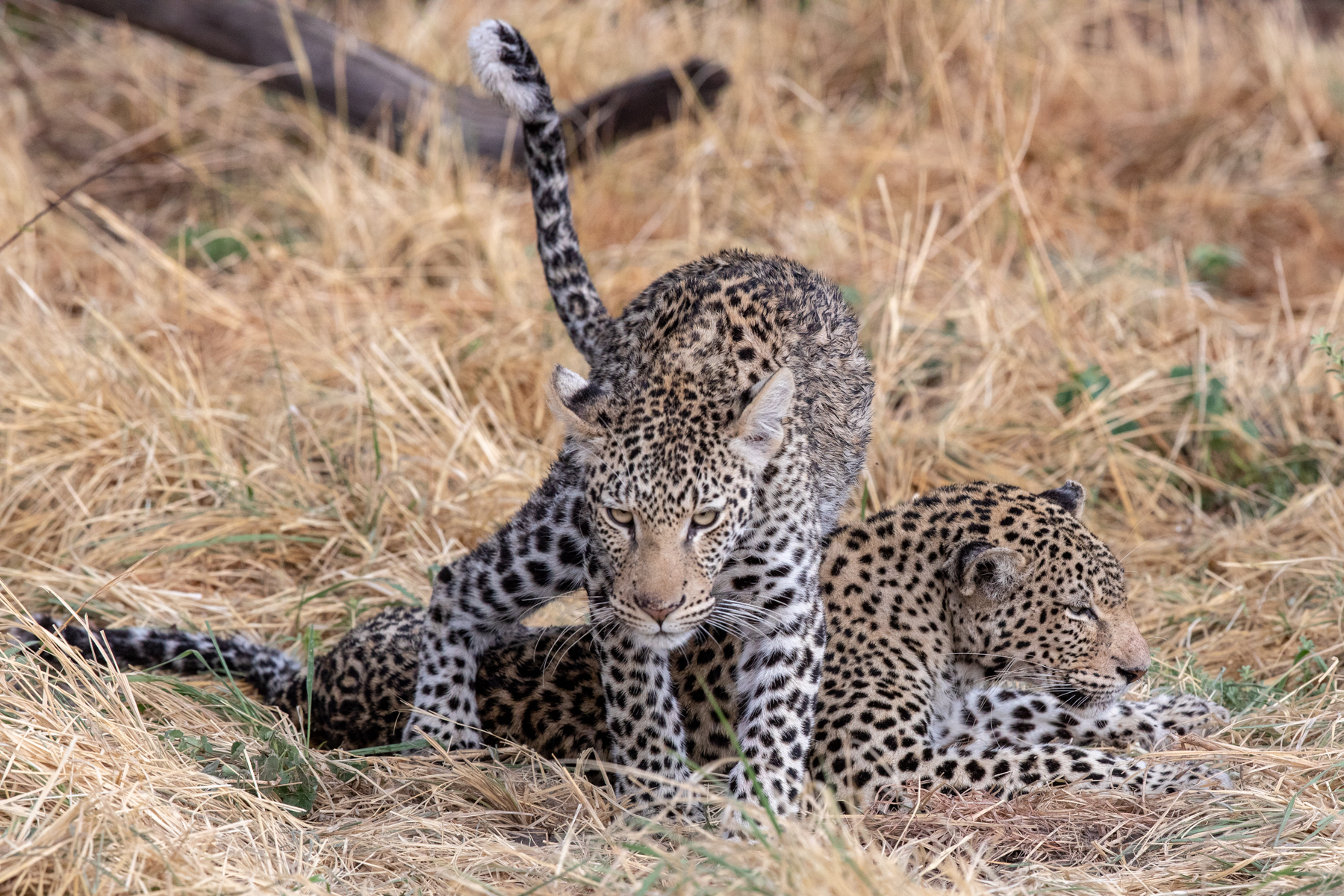
Female Leopard and her almost full-grown male cub (image by Mark Beaman)
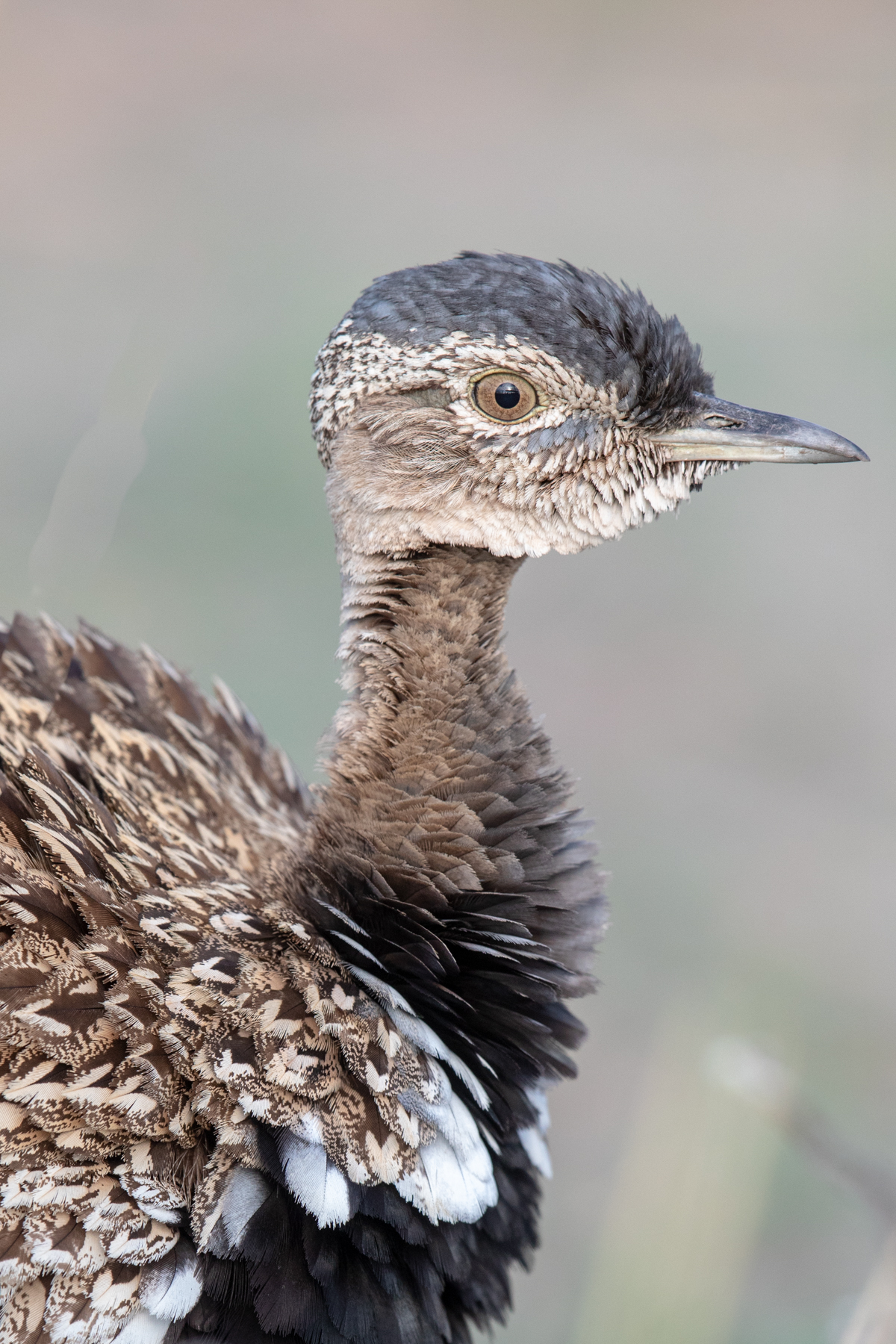
Red-crested Korhaan (or Red-crested Bustard) portrait (image by Mark Beaman)
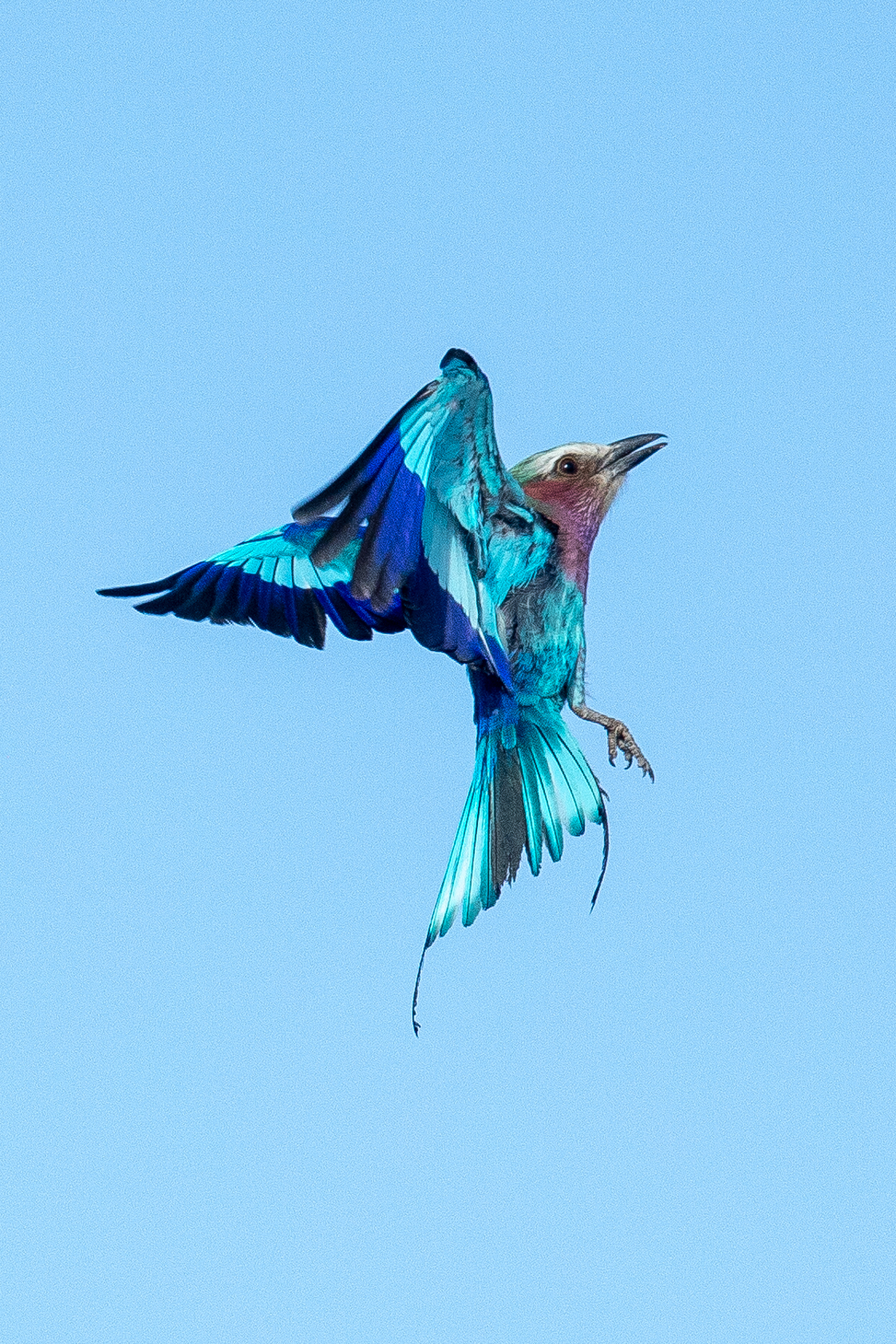
Lilac-breasted Roller flight portrait (image by Mark Beaman)
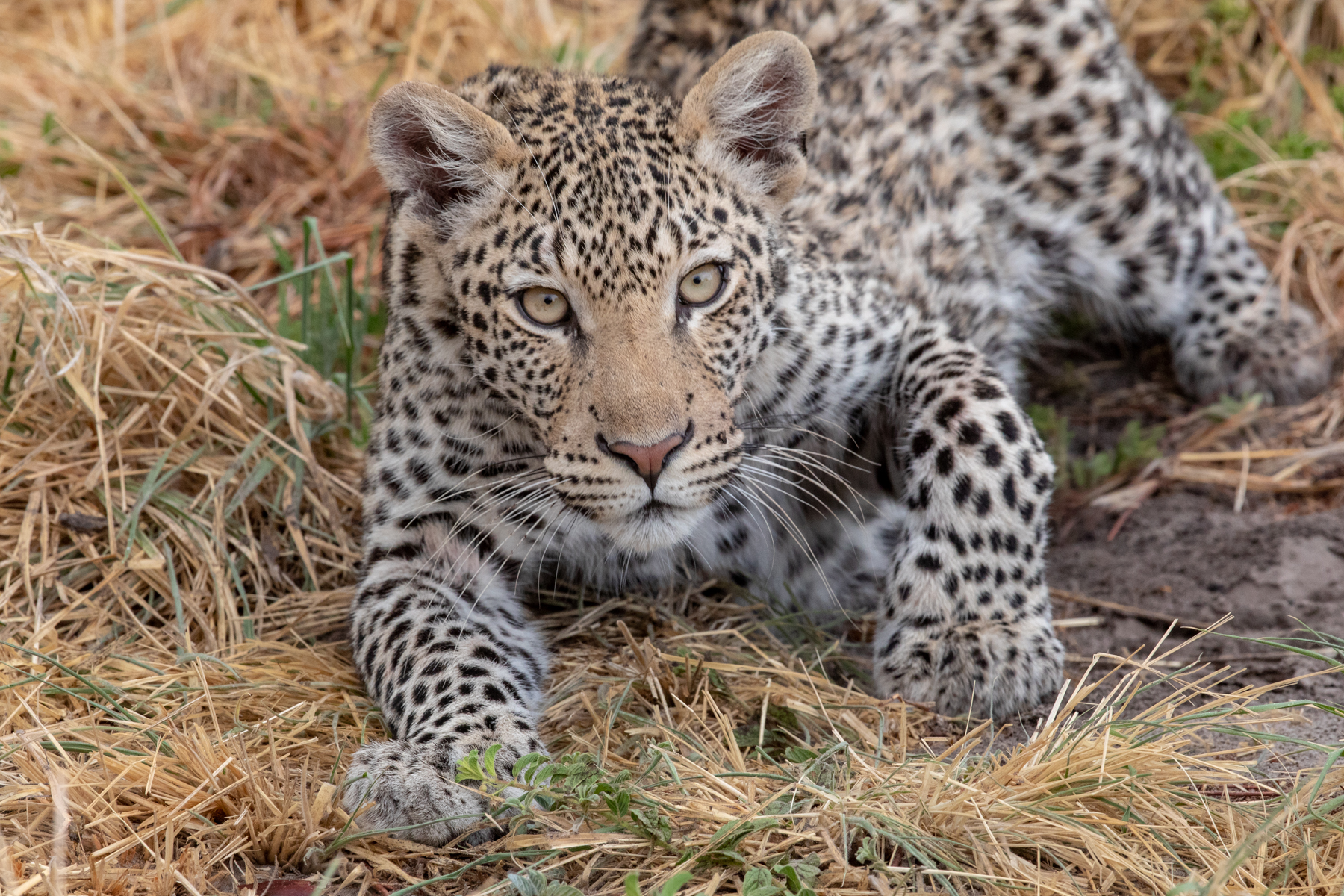
A young Leopard crouches close to us on the 2018 Wild Images Botswana photosafari (image by Mark Beaman)
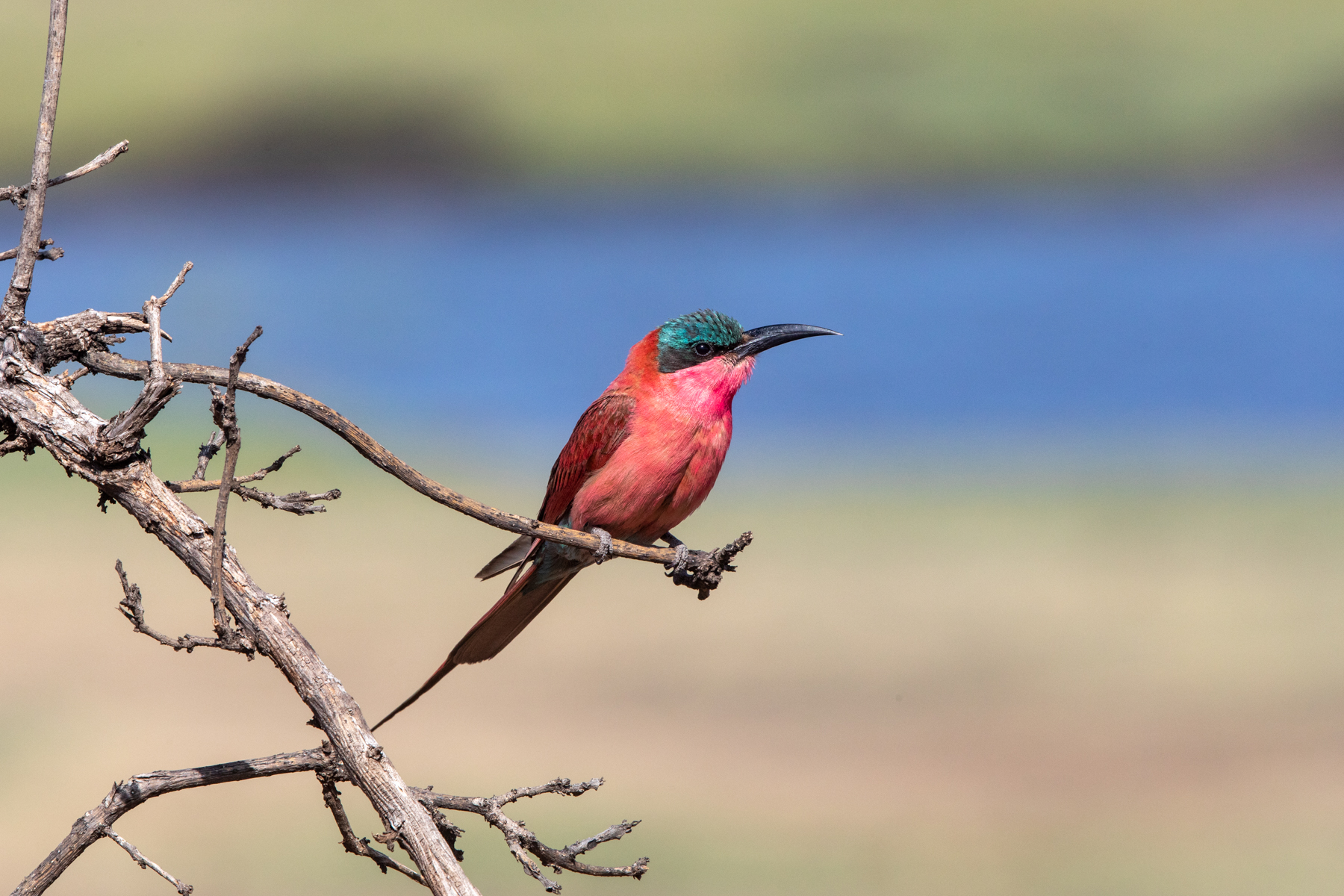
The dazzling Southern Carmine Bee-eater at the Chobe River, Botswana (image by Mark Beaman)
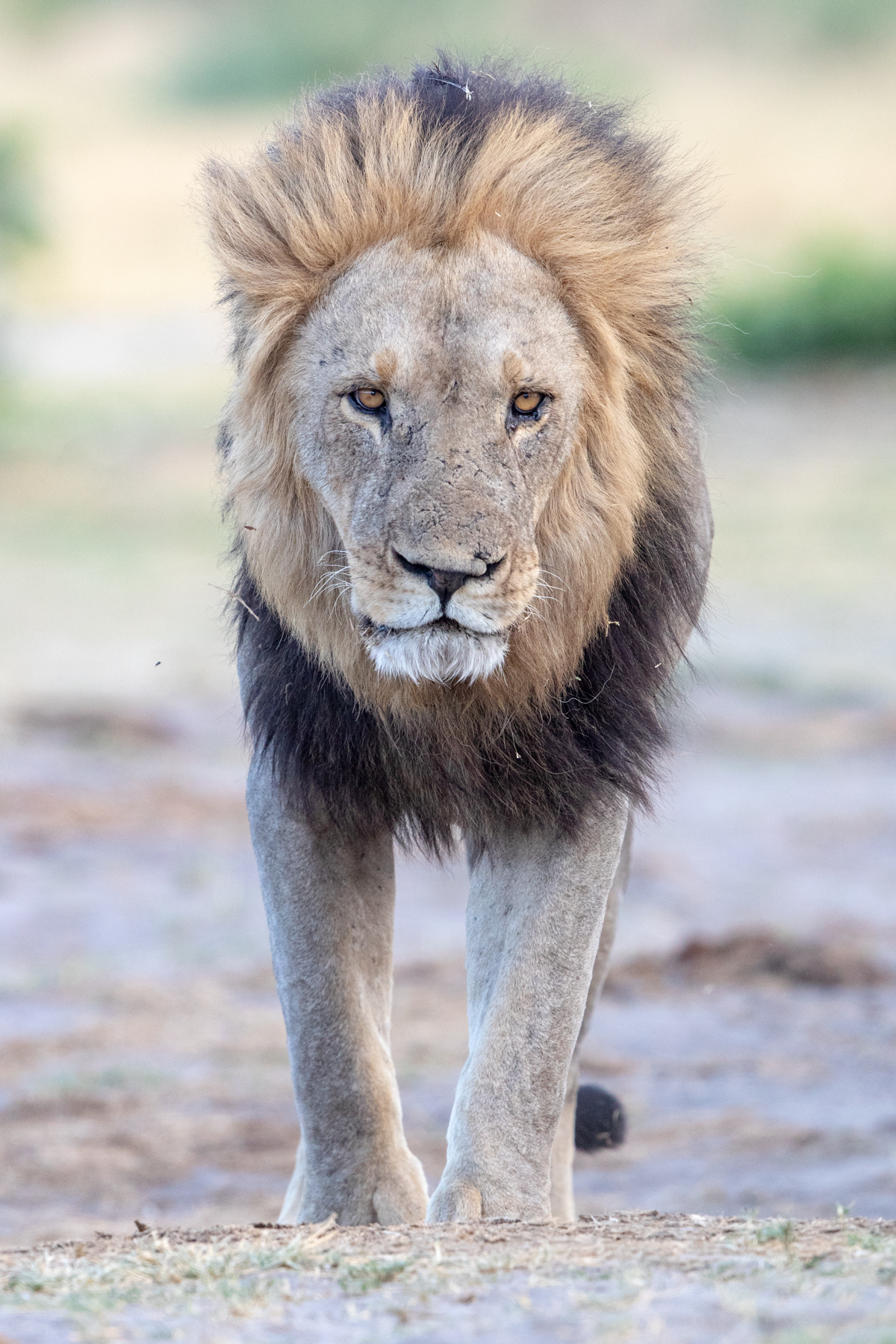
A male Lion is a truly impressive beast (image by Mark Beaman)
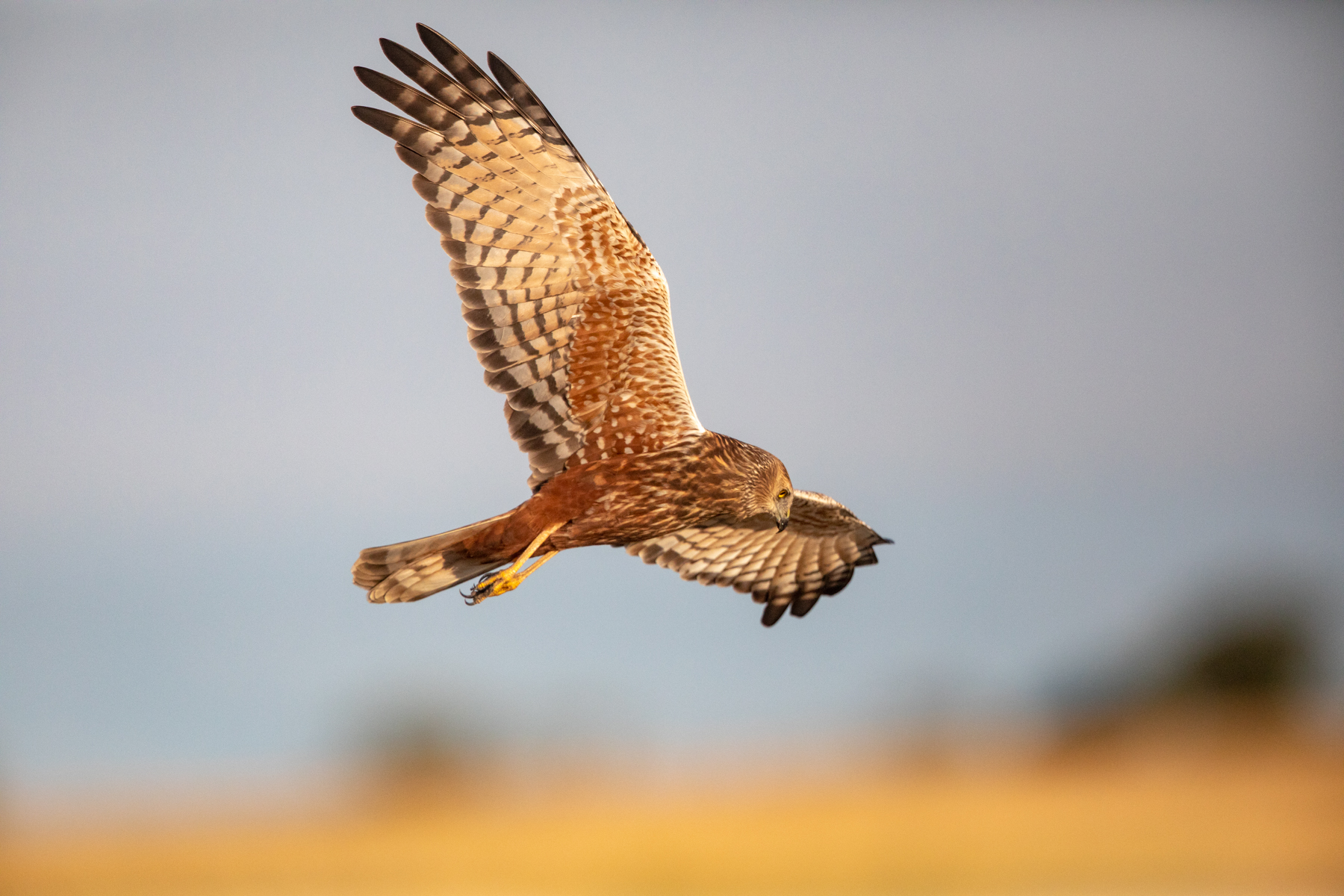
African Marsh Harriers hunt over the Okavango and Chobe floodplains (image by Mark Beaman)
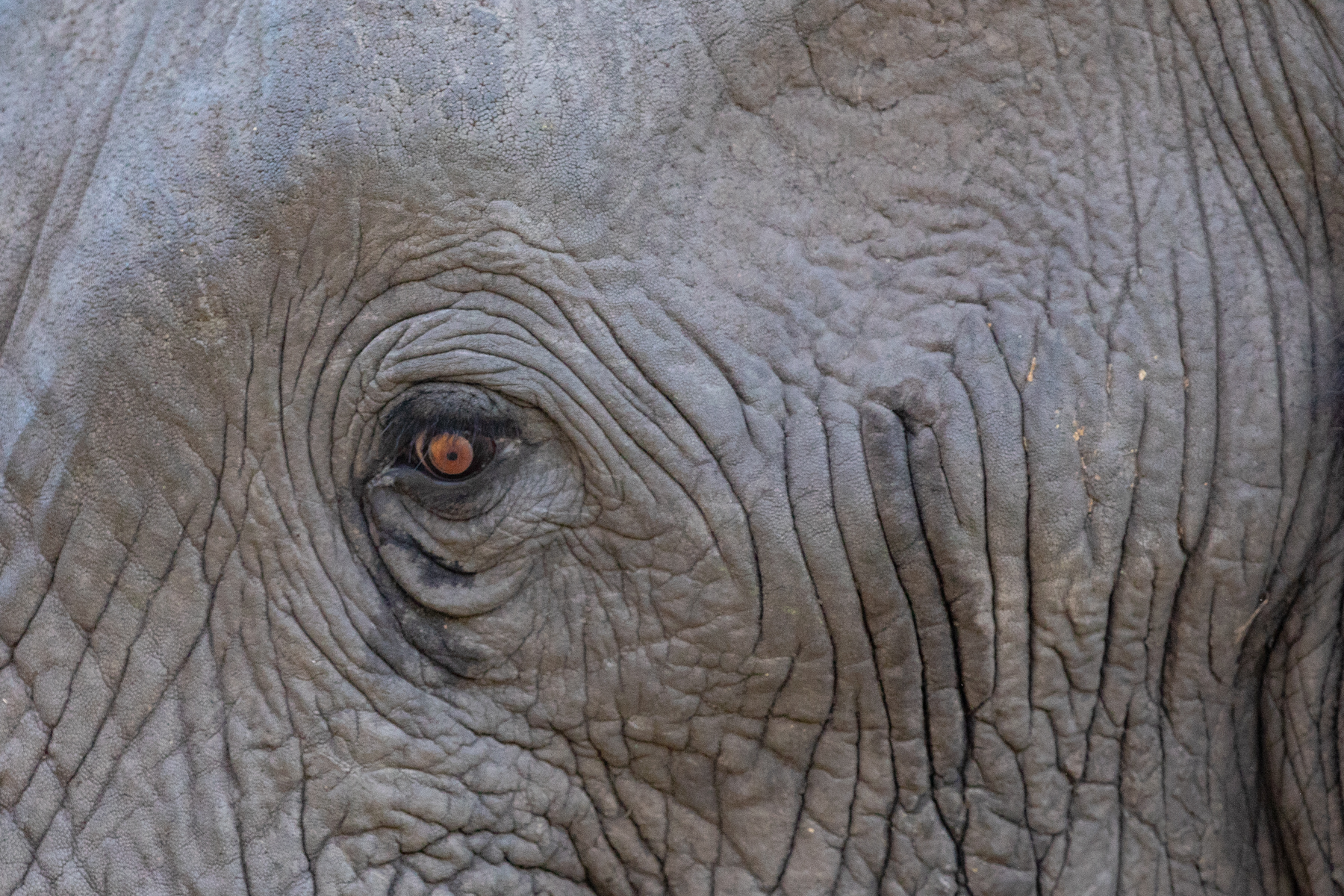
An elephant's eye has seen so very much... (image by Mark Beaman)
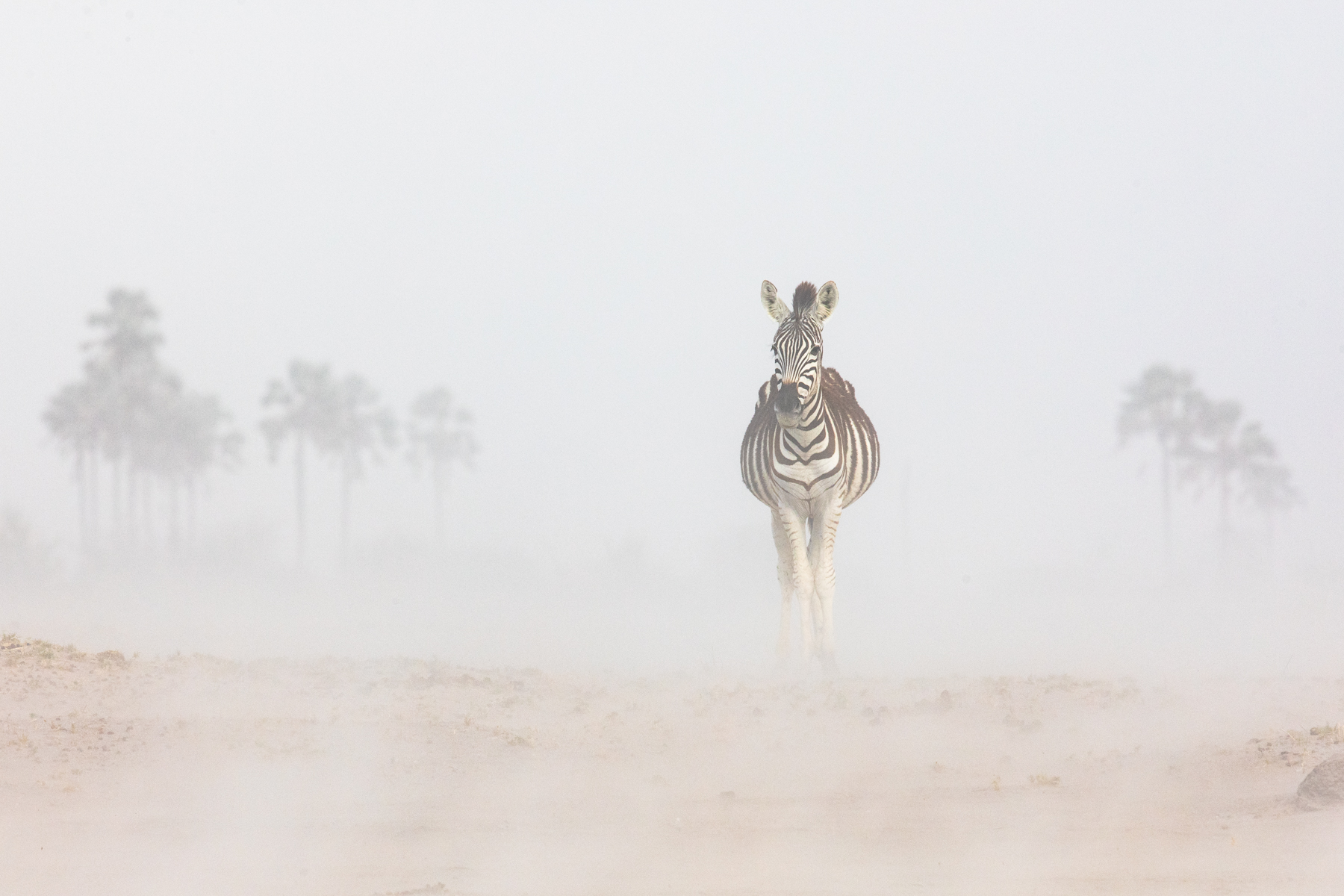
Common Zebra in a dust storm (image by Inger Vandyke)

A Tree Squirrel in its world of bark (image by Mark Beaman)

"You said you weren't afraid of crocs, so you go first! Lions reluctantly making a river crossing in Botswana (image by Mark Beaman)

Blue Wildebeest portrait (image by Mark Beaman)
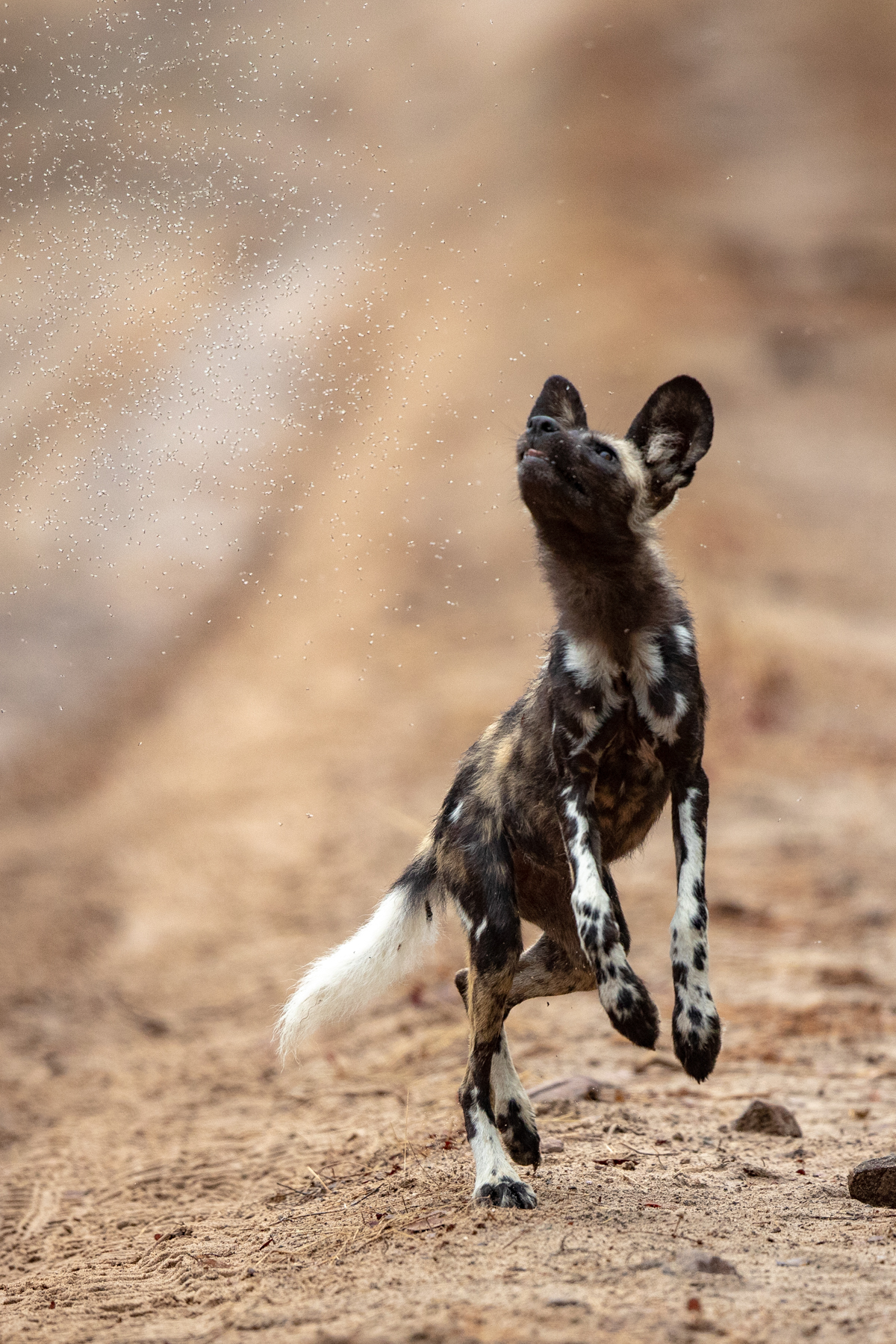
Tiny biting flies torment a Painted Wolf (or African Wild Dog) until it leaps up to catch some (image by Mark Beaman)
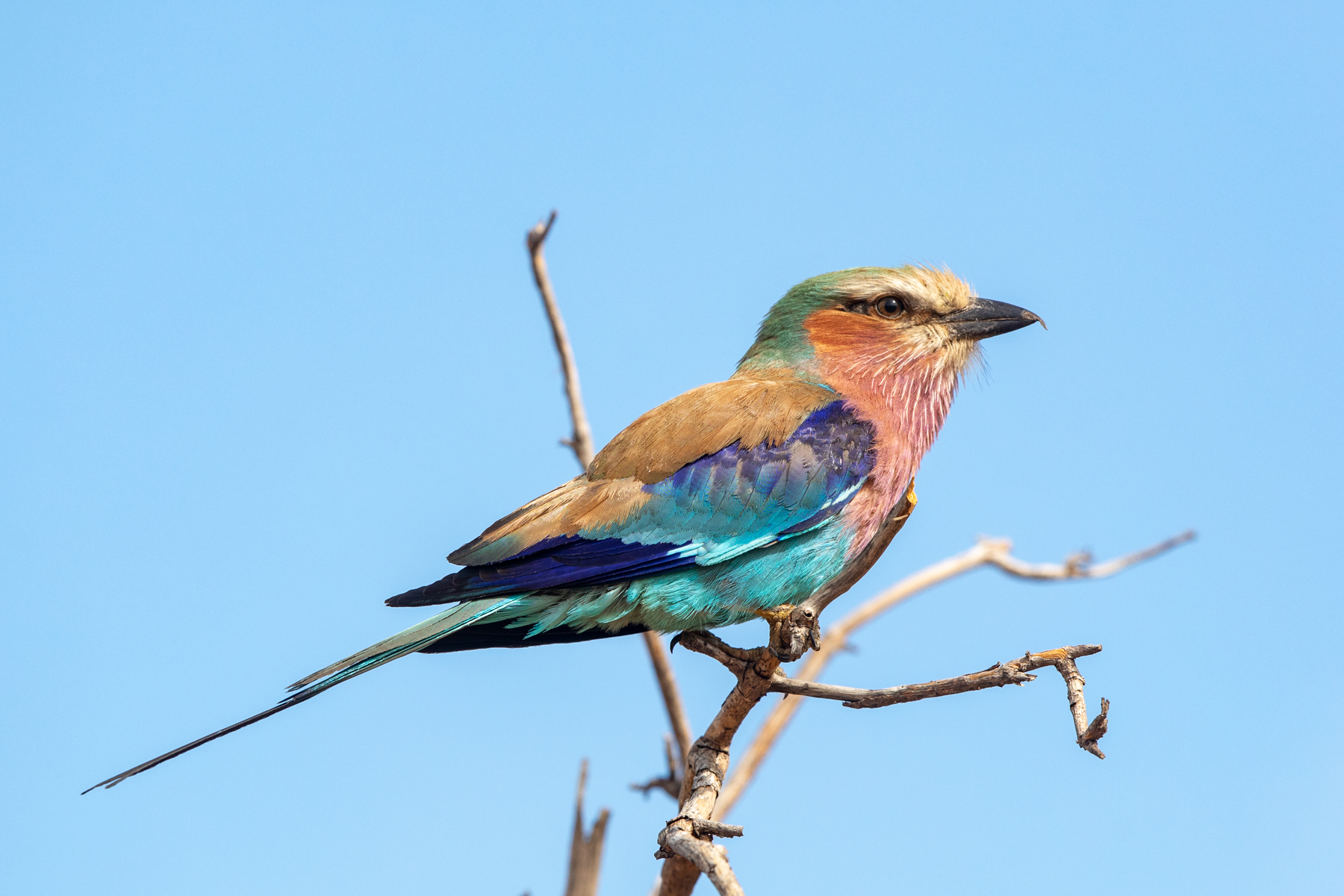
The Lilac-breasted Roller is a truly stunning bird (image by Mark Beaman)
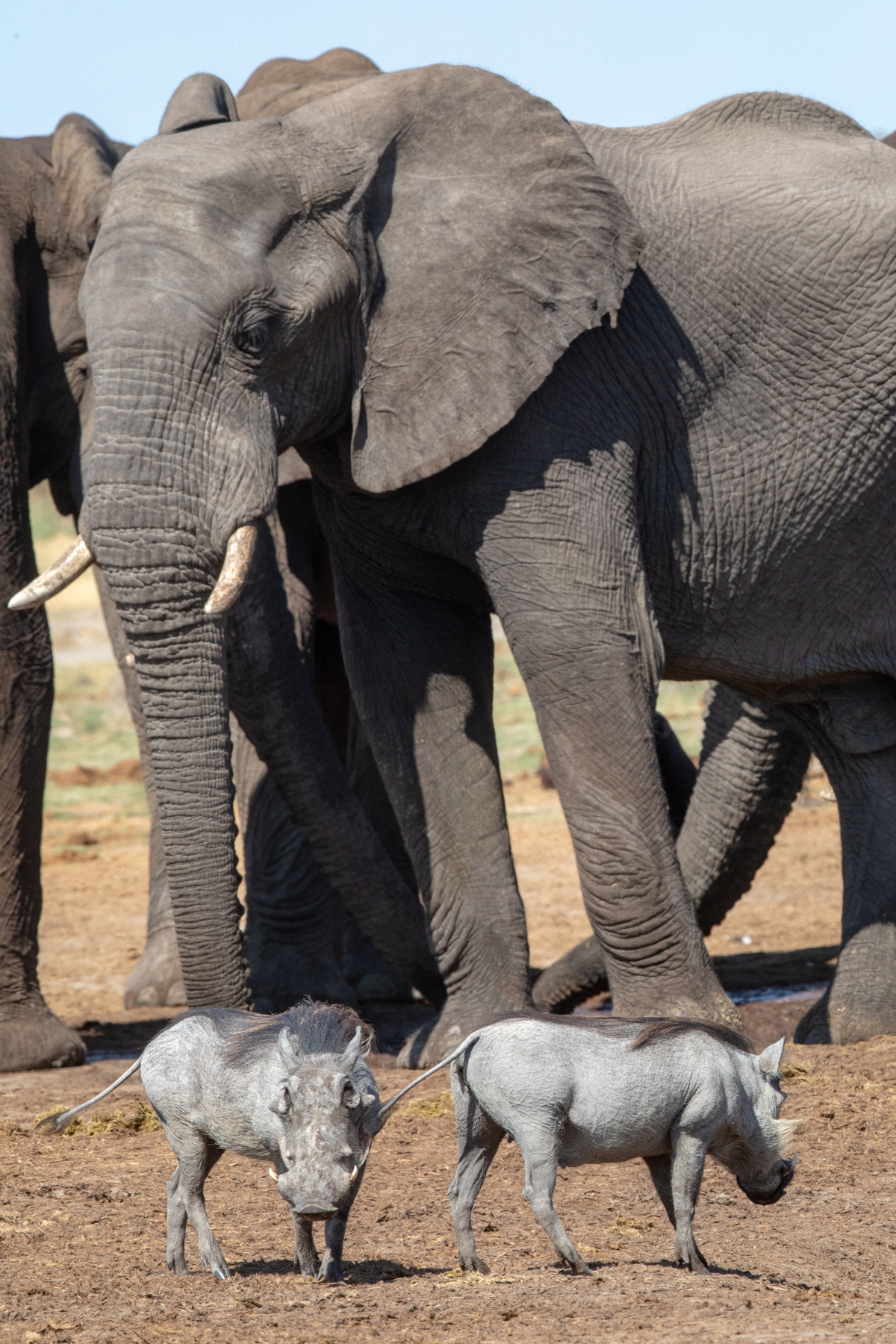
Common Warthogs and African Elephants. Little and Large... (image by Mark Beaman)

Sometimes the Okavango floods are so high that they kill the trees (image by Mark Beaman)

Lion cubs tussle over a baby elephant's foot at Savuti, Botswana (image by Mark Beaman)_
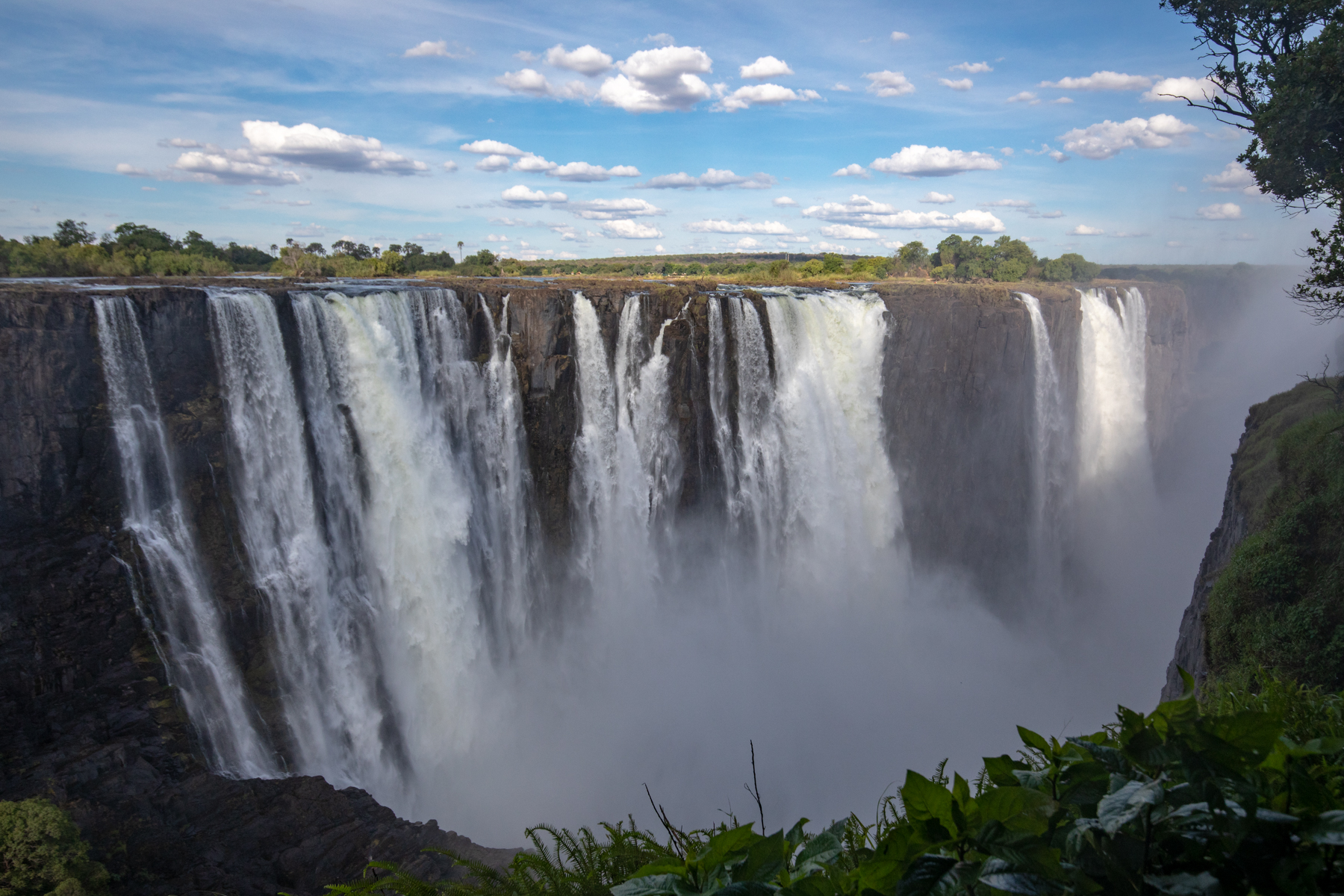
An impressive section of the Victoria Falls (image by Mark Beaman)

The Puku is an uncommon, restricted-range antelope of flood plains in Botswana and some neighbouring countries (image by Mark Beaman)_
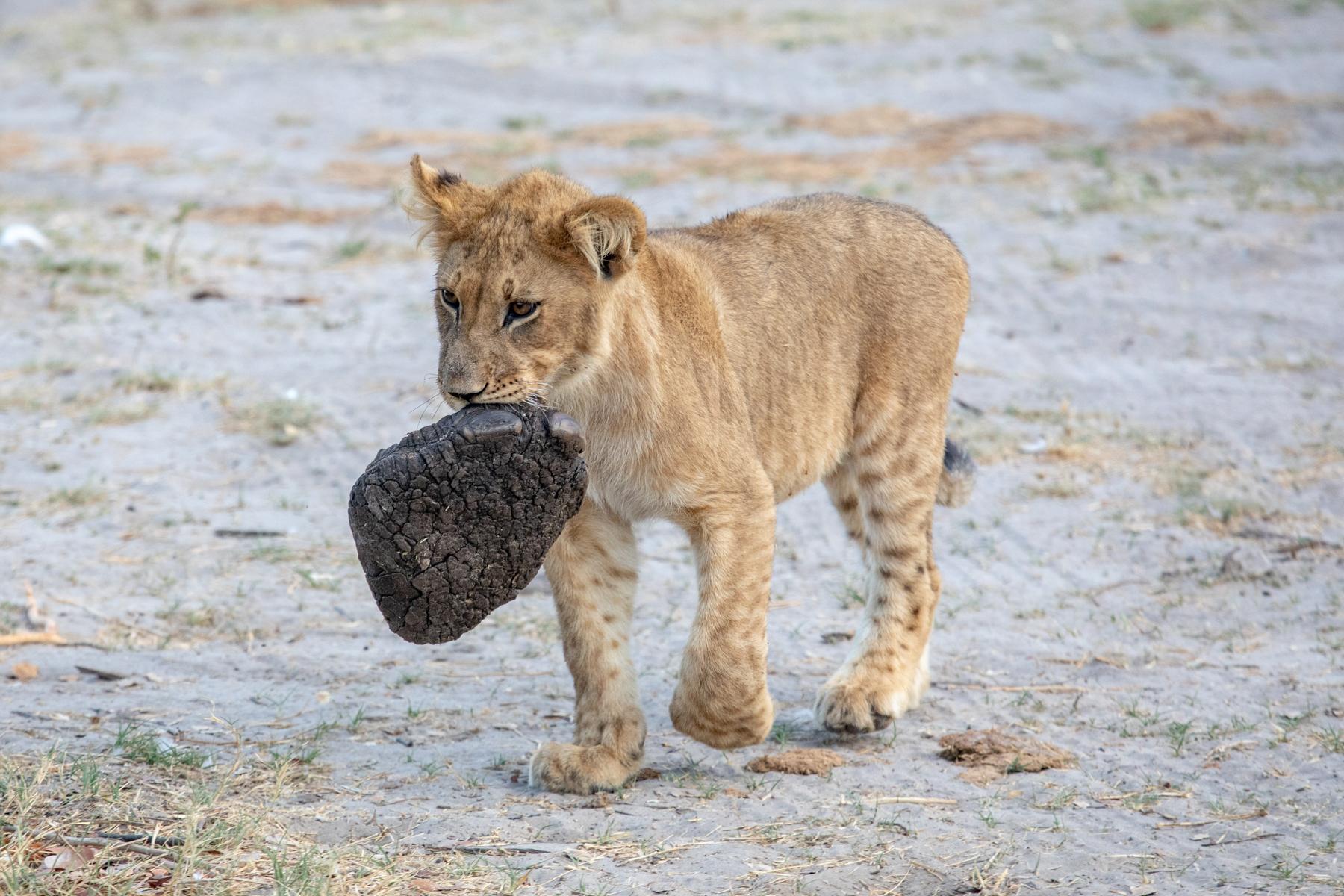
Lion cub with a baby elephant's foot, a decidely macarbre 'plaything' (image by Mark Beaman)

Impala mother and calf (image by Mark Beaman)
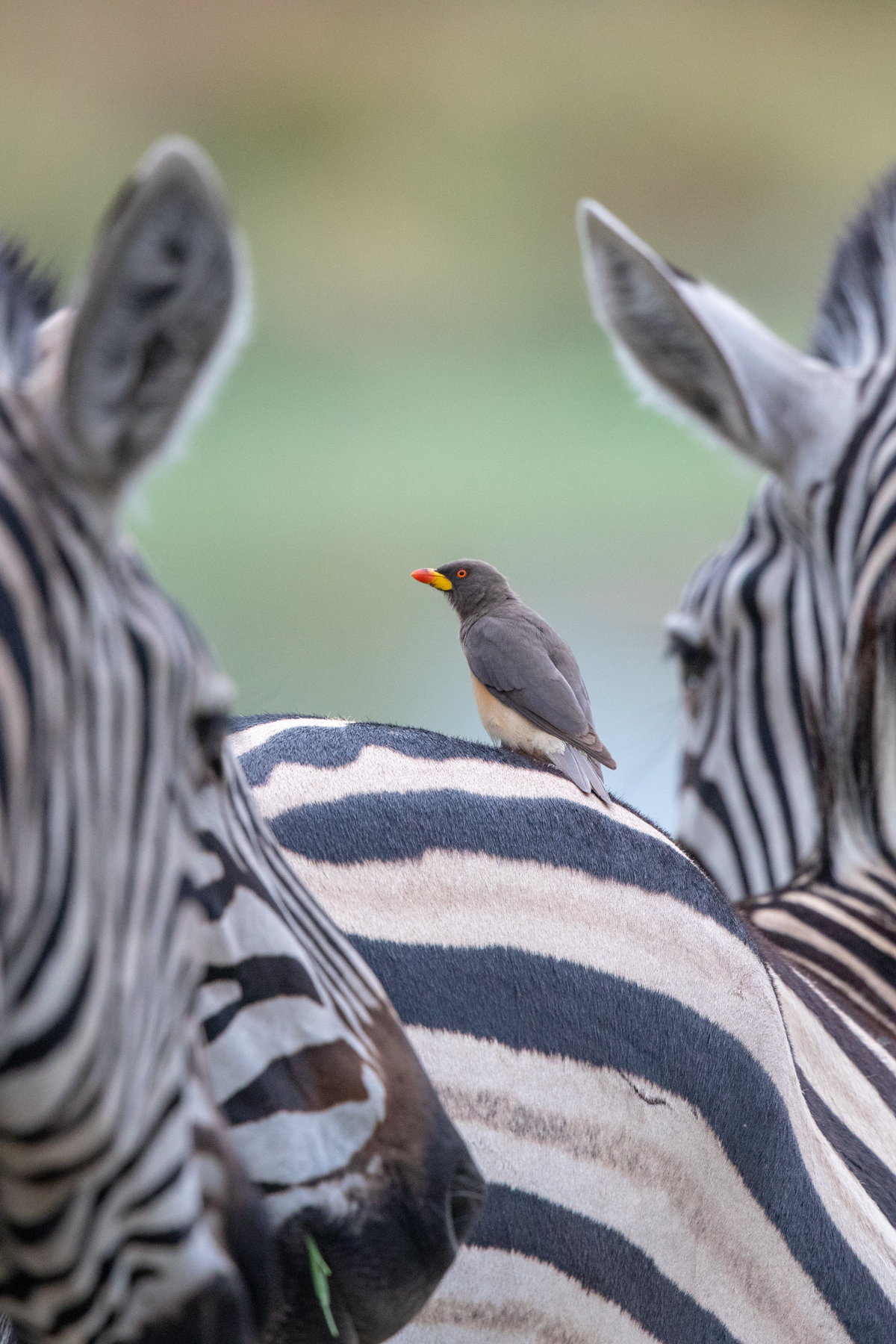
A Yellow-billed Oxpecker perches on the rump of a strange stripey animal (image by Mark Beaman)

The Victoria Falls from the air (image by Mark Beaman)
Our group assembled for the 2018 Botswana Wildlife Spectacular at the Thamalakane River Lodge near Maun. This pleasant, quiet establishment beside a tributary of the Okavango River was a great place to unwind after the long journey to Southern Africa, and the lodge gardens and riverfront provided us with our first photographic opportunities, including improbably long-toed African Jacanas pattering over the lily pads (this behaviour gives rise to the species other name, Lily-trotter), Squacco Heron, Red-billed Spurfowl, Grey Go-away Birds, long-tailed Magpie Shrikes, pied Swamp Boubous, bold and noisy Hartlaub’s Babblers and glowing Holub’s Golden Weavers. We also enjoyed the Peters’s Epauletted Fruit Bats hanging upside down in some trees just next to the restaurant.
After a short delay while some precautionary welding was done on the luggage trailer, we met up with our wonderful driver, naturalist and guide, N’kosi, and headed off for the edge of the Okavango Delta and the huge Moremi Game Reserve. Indeed we fairly soon reached the Moremi reserve gate, where some naughty Vervet Monkeys wanted to share our lunch, but from there it was a fair run through the mopane woodland until we came to our first camp, and how impressive it was! Our camp crew of three had worked like Trojans to get everything ready, all those huge tents (we had quite a few folk in singles) complete with beds and linen, and even towels folded into heart shapes (!), bathroom areas complete with showers and a large porch, as well as a large shaded dining area for our group. It was quite amazing to see what they had achieved (and, as we were to observe, they did it again no fewer than three more times as we travelled from Maun to Kasane by way of Moremi, Khwai, Savuti and the Chobe river front). What was even more extraordinary was the food. Life’s cooking would be top notch anywhere, but the fact that he created such amazing meals in the middle of the bush with quite simple facilities was deeply impressive. None of us can thank them enough for all they did for us.
We spent three days amidst the beautiful, partly wetland landscapes of Moremi, which lies at the eastern edge of the Okavango Delta proper. Indeed, during the time of the floods (especially March to June) great swathes of Moremi are under water and many of the dirt tracks are impassable, but by November the areas of open water are much reduced and animals concentrate around them.
We soon found some rather sleepy Lions, but these were to be greatly overshadowed by later encounters. Of much greater photographic interest were the big herds of Red Lechwe, a handsome antelope with lyre-shaped horns that is closely tied to seasonally-flooded grasslands, and some really impressive herds of African (or Cape) Buffaloes, complete with mature males with immense and truly impressive horns.
We found our first Cheetahs at Moremi and also had encounters with Spotted Hyaenas and more notably Side-striped Jackals, including a rather shy little cub. Common (or Plains) Zebras and Southern Giraffes, performed, as did their rather unwelcome little ‘friends’, the Yellow-billed and Red-billed Oxpeckers. Watching one giraffe stretch out its legs into a pyramid shape so that it could feed off the ground (it appeared to be licking up salt deposits) was both unusual and absolutely hilarious. Some Hippos made nice patterns for us while we enjoyed our mid-morning tea and biscuits, but for real fighting we would have to wait.
Birds were conspicuous at Moremi and good photographic encounters included some strikingly-patterned Saddle-billed Storks, a young Verreaux’s Eagle-Owl perched atop a termite mound (what a contrast with that pair of minute African Scops Owls in our camp!), graceful but endangered Wattled Cranes, noisy Swainson’s Spurfowl, migrant Caspian Plovers from Central Asia, elegant Long-toed Lapwings and handsome Double-banded Sandgrouse. Herons were well represented and we had close encounters with Goliath Heron, the lovely Rufous-bellied Heron, the strange Black Heron that forms a shady umbrella with its wings so that it can see better to fish, and the ultimate prize of the Okavango, the rare Slaty Egret. A Black-winged Pratincole among a large gathering of Collared Pratincoles was a real bonus.
Our next port of call was the Khwai community area, which is a really great tract of land with a superb selection of mammals and birds of interest to wildlife photographers and, unusually in Botswana, a more laid back approach that allows visitors to walk, take night drives or take a trip in mokoros (canoes).
Our campsite near the Khwai River was so beautiful and a succession of elephants came to drink and have a mud bath. Indeed our camp crew had a bit of a wildlife issue here as African Wild Dogs, a Leopard and even a Honey Badger decided to visit and see what they could raid!
African Wild Dogs (now increasingly called Painted Wolves, reflecting their true nature) were the highlight of highlights for us at Khwai, with three separate encounters of up to 15 at a time. Our best encounter was as early as our first afternoon, when we came across a pack of 15 sleeping in the shade of some bushes. We waited and waited and eventually one of the dominant animals emerged from a bush. N’kosi told us the others would soon come out and greet each other, and so it transpired. Soon it was a sea of dog faces and those big, big ears, all around us. They were totally fearless.
We spent a long time watching them greet each other with teeth showing and ears back, play around, rest and do all the things Painted Wolves like to do. Eventually the adults headed off and soon the older pups and younger pups followed them. We followed too, until suddenly the lead animals came across a couple of Common Wildebeest (or Brindled Gnus). N’kosi was spot on again. He said they were going to chase them, but just for a bit of fun, not seriously, and that was exactly what happened soon after. Those wildebeest had to run for their lives, but the wolves soon tired of their ‘sport’. We, however, never tired of watching these amazing wolves until the light had almost completely gone.
On our first morning at Khwai we came across the ‘River Pride’, consisting of 12 individuals, clearly wanting to cross the river. For some time they hung around on the southern bank, clearly nervous about crocodiles (and indeed with justification as a large croc was soon heading their way). However, persistence paid and eventually the adult females took the plunge and crossed as fast as possible, shaking the water from their coats once they reached the far shore. Then it was the youngsters turn, but they really were hesitating, peering into the water and snarling. It took calling from the adults to get them to take the plunge, and indeed the first one to go in was actually pushed in by the others! “You go first if you aren’t afraid of crocs!” seemed to be the message. Eventually they all followed in a line. What a wonderful and unexpected encounter this had been.
We also had several Honey Badger encounters, including one that came near enough to provide some decent photos. Better still was the fine female Leopard that we came across near the Khwai River and which allowed us long, wonderful, close-up views.
Night driving at Khwai was very productive. As well as plenty of Springhares, a strange wallaby-like, hopping creature that is unrelated to true hares, we also came across Wild Cat, Common Genet, Lesser Galago (or Lesser Bushbaby), Spotted Hyaena and even a group of Painted Wolves sleeping on a track. And I have not even mentioned the Tiny Fat Mouse!
Our experimental mokoro ride was a bit flat at first, apart from some rather close buffaloes and lots of hovering Pied Kingfishers, until we were blocked from further progress by some Hippos in the middle of the narrow channel. After we headed back to base a really awesome and very unusual event occurred. Rounding a bend we came across a family group of elephants that clearly wanted to cross the river. They were rather uncertain about proceeding once they spotted us, but eventually the main herd waded through the river, helping the little ones as they swam along, trunks aloft. While the action went on three ‘guards’ kept very close to us, just in case we represented a threat, flaring their ears and occasionally trumpeting until they crossed in turn. It was a magical encounter. I asked our boatman how often he had seen elephants crossing this close and he told me it was the first time for him in his three years on the river!
The big bird highlight at Khwai was the huge, marmalade-coloured Pel’s Fishing Owl that we found at its day roost. It took two attempts but we were finally able to take photographs of this most-wanted species balefully looking down on us. What a creature!
From Khwai we made our way into the Savuti sector of Chobe National Park, along the way coming across an endearing group of Ostrich chicks trying to cross the road with their parents. Savuti is a more arid area than Khwai, especially now the Savuti Marsh is dry again. (The Savuti Marsh comes and goes over time, affected by the movement of geological faults in the region that cause water flow to stay on the surface or move underground.)
We spent much of our time at Savuti at and around the several permanent water sources, known as ‘pans’ in English or ‘vleis’ in Afrikaans. At this season the concentrations of African (or Savanna) Elephants at these pans was very impressive, and there was a lot of action going on. In particular the dominant individuals chased away the more subordinate animals from the best drinking and mud-bathing spots, with much charging, ear-flaring, squeals and trumpeting. This competition was so intense it was extended to other waterhole visitors, including Common Zebras and Common Warthogs. We had a good laugh when even a baby elephant started chasing off warthogs.
The famous Savuti ‘Marsh Pride’ of Lions specializes in preying on elephants. Seeing a kill is a rare thing (they almost always hunt them at night) but we came across the pride finishing off the remains of a young elephant. It was highly photogenic and amusing, if rather macabre, watching a big male dragging the remaining ‘skin and-bones’ around to try and reveal a bit more to eat while a couple of small cubs refused to let go of their prize and were dragged around too. We also watched the cubs playing with a baby elephant’s foot, which is not something one usually sees Lions doing! We had many wonderful Lion encounters in Savuti, including some superb, black-maned male Lions and we even watched them trying to hunt a warthog.
Out in the expansive, tawny-coloured grasslands we had a splendid encounter with Cheetahs. At first they spent time sleeping and grooming themselves, but after a time they went off to hunt, giving a Steenbok a close shave with death. As they walked back to the clump of trees and bushes top resume their siesta, they walked right past us.
Leopards also gave us great views at Savuti, and on several occasions. A mother and its well grown male cub were so co-operative that we could spend long periods with them at close range. We even watched one hunting a young Impala, but it was unsuccessful. Talking of young Impalas, they were numerous, for November is their calving season. Sometimes there were herds with dozens of youngsters skipping about or ‘pronking’ (bouncing into the air on all four legs) as they ran off. The young made for some lovely images, especially when backlit.
Even our campsite turned up some interesting images, with Southern Giraffes silhouetted in the dawn light grazing on bushes and an awesome African Elephant that came right up to the tents and fed on the foliage. By staying still and calm, it came as close as 2 metres (7 feet) from us, clearly aware of our presence and watching us with a small, bloodshot eye, yet unconcerned.
Savuti was definitely a major highlight of what had rapidly become a very successful Botswana safari indeed. As well as the big stars like Lions, Cheetahs, Leopards and elephants, there were lots of elegant Greater Kudus, strikingly-patterned Roan Antelopes and our first Leopard Tortoises.
Birdlife was also photogenic and we spent time with a pair of Lilac-breasted Rollers at their nest, followed some huge Kori Bustards, photographed a close pair of African Hawk-Eagles with their young, enjoyed the display antics of Red-crested Korhaans (a kind of bustard) and had a seriously close encounter with Southern Yellow-billed and Southern Red-billed Hornbills at a giant baobab tree. We even paid a visit to some San (Bushman) rock paintings. How tragic that the San are a people now on the verge of extinction.
Our final port of call was the Chobe River section of Chobe National Park, and to get there we had to briefly leave wild Africa behind and pass through an area of villages, cultivation and pastures that reminded us how restricted and fragile the remaining wilderness is becoming, even in a conservation-conscious country like Botswana.
Almost as soon as we left the tarred highway (an amazing sight after 9 days on dirt tracks!) and turned into this northeastern sector of the park we had another fantastic encounter with Painted Wolves, this time a pack of 14 individuals (7 adults and 7 pups). Once more we had a thrilling time as they came right up to our vehicle (barely a metre away at times!), greeted each other, relieved themselves, drank from pools and jumped up to catch the tiny flies that seemed to be annoying them. This was our fourth out of no fewer than five wolf encounters in total, which just goes to show why Botswana is considered the best place in Africa to see this highly endangered canid.
Along the banks of the wide Chobe River itself (with Namibia just across the main channel) we admired and photographed wintering Amur Falcons, handsome African Marsh Harriers and best of all the stunning Southern Carmine Bee-eaters, which were numerous here.
More Lion encounters were enjoyed, including a pride of 14 right out in the open on the riverbank, and a superb Leopard showed itself off by walking along a big, open branch in a riverside tree.
Another photographic highlight was the zebras crossing the river to reach the rich floodplain grazing on the Namibian side (they spend the night in safety in Botswana, well away from Namibian ranchers). A surprise though was the lack of elephants. Unusually heavy and early rain, just before we arrived, had given them the chance to move south early.
We also made a boat trip on the Chobe River, which gave us a very different perspective. Highlights included Puku (a wetland-loving antelope), some very big Nile Crocodiles, Hippos that sparred quite fiercely with one another, the jewel-like Malachite Kingfisher and the lovely White-crowned Lapwing.
We were all sad to finish such an amazing and highly successful safari and say goodbye to N’kosi, who was going to make the long drive back to Maun in one go, and of course our truly amazing camp crew. At Kasane we dispersed to the riverside lodges, the airport and, in the case of Inger and I, the awe-inspiring Victoria Falls, just a short, surprisingly easy hop across the border into Zimbabwe.










































































